#and I was like thanks?? I just read a few articles on pubmed
Explore tagged Tumblr posts
Text
One of my favorite things is when doctors ask if I have a degree or work in the medical field and I get to be like “nope this is just me, my high school diploma and a computer.”
#doctor today complimented me on my ability to synthesize information and depth of understanding#and I was like thanks?? I just read a few articles on pubmed#guess the bar must be real low lmfao#one time a doctor asked me this because I knew what reynaud’s was and I’m like bro any dumbass with Google could know that
1 note
·
View note
Note
Hi there, I was recently told by my dermatologist that she’s 90% sure I’ve got vitiligo (she wants to take a sample to test to make sure there’s nothing else going on before she diagnoses me for sure.)
I went online to look for tips for caring for my vitiligo and the like but found so many people so uncomfortable in their skin because of it and trying to get rid of it and I struggled to understand why. I’ve always thought it beautiful, so it really confused me.
I am fat, disabled, autistic and visibly queer so I don’t really feel the same weight of beauty standards because of being so on the outer edge of societal norms. I am also privileged in the way that I am white and pale so my vitiligo doesn’t stand out all that much. I think I’ve been ignorant and insensitive and I want to fix that.
I would really love to be more informed and understanding about the community going forward so that I don’t do any harm and I remain mindful. Do you know any good resources that I can read or research? I’m having a hard time finding anything that isn’t about getting rid of it.
I sincerely apologize if any of this comes off poorly, thank you for your time.
Hi!
Yeah it's rather unfortunate that a lot of the material surrounding vitiligo is about getting rid of it </3
I'm sure your dermatologist has probably already discussed this so sorry if I'm just repeating stuff you already know lol. But when it comes to caring for vitiligo the main things you want to pay attention to are things like sun exposure and UV intensity. Wearing sun screen as frequently as possible is also a really good idea. Usually the worst time of day is around noon to one pm but during the summer time it might be an all day thing.
I am not a doctor/dermatologist so cant really offer any medical advice besides the few things I remember my dermatologist telling me when I first got diagnosed years ago.
Idk how in-depth you want to go with the research stuff but there are medical studies out there that talk about genetic factors and what not. A few years ago I did a presentation on it for a biology course in college and luckily I saved it to my personal slides account so I still have the bibliography that I used!
Spritz, Richard A, and Genevieve H L Andersen. “Genetics of Vitiligo.” Dermatologic clinics vol. 35,2 (2017): 245-255. doi:10.1016/j.det.2016.11.013
Al-Shobaili, Hani A. “Update on the genetics characterization of vitiligo.” International journal of health sciences vol. 5,2 (2011): 167-79.
“Vitiligo: MedlinePlus Genetics.” MedlinePlus - Health Information from the National Library of Medicine, https://medlineplus.gov/genetics/condition/vitiligo/#frequency. Accessed 12 Apr. 2021.Boggs, Will.
“Autoimmune Diseases Common in Patients with Vitiligo - The Rheumatologist.” The Rheumatologist, https://www.the-rheumatologist.org/article/autoimmune-diseases-common-in-patients-with-vitiligo/. Accessed 12 Apr. 2021.
“Vitiligo: MedlinePlus Genetics.” MedlinePlus - Health Information from the National Library of Medicine, https://medlineplus.gov/genetics/condition/vitiligo/#frequency. Accessed 12 Apr. 2021.
“Medico-Historical Study of ‘Kilasa’ (Vitiligo/Leucoderma) a Common Skin Disorder - PubMed.” PubMed, https://pubmed.ncbi.nlm.nih.gov/17154114/. Accessed 12 Apr. 2021.
As for when it comes to the community the best research will probably be from just talking to people who've had the condition! Personal anecdotes are def the way to go, so searching for any community groups might be worth a shot!
Also don't worry you don't have top apologize <3
22 notes
·
View notes
Note
Do you have any recommendations for books/textbooks about prions? I only have a basic understanding and I'd like to learn more. Thanks!
SORRY THIS IS ANSWERED SO LATE im on pc now so i can list these badboys out! Most of the books around prions are like...egregiously expensive so i much prefer research papers to scouring the web for pdfs of textbooks (and also a lot of the books are a bit out of date anyway!)
forewarning that these articles may require prior knowledge on some molecular bio and chem topics (and of course just understanding how proteins work) but when in doubt google i suppose!
comprehensive paper on prions
paper on misfolding
UC berkeley’s site on prions (for their chem engineering students but i think its neat and helpful + contains much less jargon and covers some necessary prior knowledge)
artifical strain of human prion protein created in vitro (i just think this is neat tbh)
molecular pathology of prions
another paper on the pathology/pathophysiology
a website on the pathology for residents (maybe a little easier to read imo)
CDC’s page on prions (easier read + contains useful links)
NIH’s page on prions (another easier read)
theres wayyyy more stuff besides this out there obv! i like to check pubmed to stay up to date and get more info, but it’s just a matter of googling and also seeing if there are opportunities around you to work with proteins (i say proteins in general and not prions seeing as very few places actually work WITH prions themselves but you may have a lab nearby or at your uni that might!)
#prions#resources#medical#some of these i need to finish reading myself but overall#these are some pretty good ones#tangled-brambles-in-a-wild-wood#💌
17 notes
·
View notes
Text
Tranquil’s Study & Self-Care Challenge | Day 1
Man oh man, I’m a sucker for community stuff! I’ve wanted to do one of these challenges ever since I started up my studyblr but I haven’t gotten around to it. So hey! Why not give it a go! While it’s true that I’m currently the most inconsistent I’ve ever been... why not? If I end up answering some questions and not others, having a crazily irregular posting schedule, or if I just answer the first two questions - cool! Let’s not get so hung up on perfection and consistency, people. Let’s embrace half-finished challenges, rushed posts, and kind of sloppily written answers in the spirit of chaotic academia! As long as you're creating something, writing something, and have fun doing it, there’s merit in it ⭐️

Today I chose productivity in the name of mental and physical health.
Today, my goals were to exercise, cook a healthy meal, and get some reading done for my social psychology course. Busy busy! 🐜
*
Day One: Tell us a little bit about yourself! What classes are you currently taking, if any? If not, what are you currently studying or what is your current long term productive projects or goals?
In September 2020 I officially began my university journey as I signed up for introductory courses in psychology and philosophy, each consisting of four smaller courses: introductory psychology, neurology, personality psychology, social psychology & history of philosophy, ethics, logical thinking, metaphysics.
I’m currently studying social psychology and metaphysics. I love love love social psychology, and it came as a shock to me that I ended up being more passionate about this branch of psychology than the personality one, but as soon as I started learning more about social psychology it all just made sense. Something clicked in my brain and I regained a passion for learning I haven’t felt in far too long. As for metaphysics... we have a love-hate relationship, to say the least. One day I’m absolutely thrilled that I can write simple sentences using first order predicate logic, or that I can discuss theories about the existence of race, or time, or free will with my course mates, while the next I look at my course literature with pure contempt, wondering why oh why I’m putting myself through this.
As for long-term goals psychology and philosophy wise... Understanding the memes would be nice, haha. On a more serious note though: I’m not sure. I’m still experimenting with my likes and dislikes, interests and, well, not interests. I have considered seriously pursuing both subjects and applying for programs spanning over a couple of years rather than the small-batches-of-courses approach I currently have, but at this point in my life I don’t really like the prospect of a commitment that big. Especially not until I’ve had my chance to travel and explore the world (and myself!) But then again, this morning I caught myself reading abstracts of psychological articles on PubMed for fun (major geek warning - and I love it!), so maybe there is a little scientist in me after all.
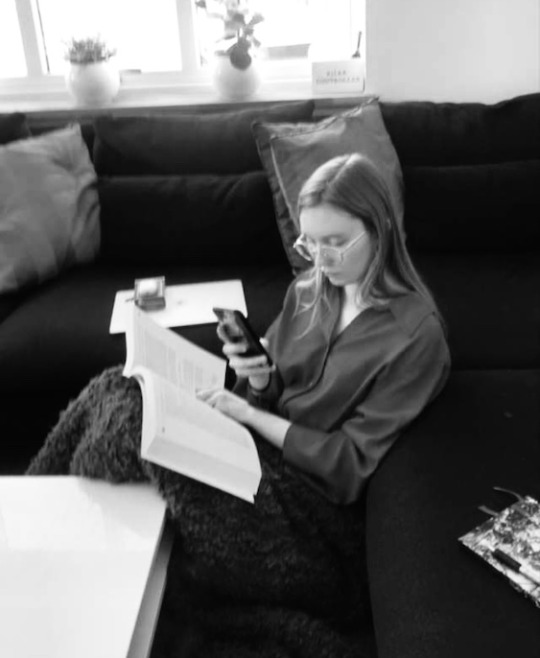
A blurry picture of me taking notes on my phone. You’re welcome.
What I’m going to study this autumn - if anything - and at what university is yet to be decided. I’ve applied for a few on-campus courses this time around (so far all my uni courses have been distance-based/online), among which we find goodies such as aesthetics, egyptology (yup, that one was a spontaneous impulse), and Latin. We’ll see how that works out for me (or if I decide to do something else).
Aside from my official university business I’m a language lover. My target language is Japanese, but aside from that I have some slightly-more-than-basic Spanish knowledge. Oh, and Swedish is my native language by the way, so there’s that too. I also impulsively study whatever happens to catch my fancy at any given moment or whatever language seems to be in line with one of my momentarily relevant grand master plans that I often end up shelving. I don’t have any structured study schedule or specific goals or anything as I see language learning purely as a hobby. If I feel like learning some grammar, some kanji, or attempt to read or write a little story, then I do. But I’m rarely able to force myself to adhere to a structure “just because” (and I’m still sort of coming to terms with whether that’s a good or a bad thing).
Now, knowing myself, I could probably turn this into a proper essay and write several additional paragraphs, but I think I prefer using that time to take a little walk. Sorry! (or “you’re welcome”?) This has been a really lovely break and I’m super excited for Day 2! Thank you @tranquilstudy for making this challenge :) I’m looking forward to getting to know some fellow study lovers!

Do you want to join in on the fun? Take on a challenge? Get to know some new people? Become a fellow #tranquilstudybuddy! ⭐️
#okay yes technically this is from yesterday#but I was tired and didn't feel like I had the energy to sit down and relay my thoughts properly#see?#mess!#but that's okay - I'm still very much enjoying this :)#embrace the chaos friends!#or if getting a kick from being consistent is more of your thing then hey go for that#I'll cheer you on either way :)#tranquilstudybuddies#tranquil's study & self-care challenge#studyblr#studyspo#study inspiration#study motivation#p.s. I also do yoga with Adrienne#she's lovely! :)#03/05/2021
8 notes
·
View notes
Text
Gravity, chapter 1 (Mirandy)
Andy Sachs was not a scientist.
She felt that this was an important point to make, particularly in the weekly staff meetings, when the scientific editors’ discussion of the latest endosymbiont or cytokine or whatever devolved into semi-hysterical PubMed searches and emphatic data-set thumping. Eventually, after they’d worn themselves out squawking at each other, they’d turn to her to tie-break.
“Guys,” she’d say. “I am not a scientist.”
But she was the managing editor, and despite having a pay grade significantly below that of the Ph.D.s in the room, it somehow fell to her to figure out which of the six nearly-identical Figure 1s to use.
“Your problem is you’re too capable,” Trixie said, examining the underside of her coffee mug with an expression that was half interest and half revulsion.
“You say that like it’s a bad thing.” Andy closed her laptop and scrubbed both hands over her aching eyeballs. “Are you ready to go?”
“What do you suppose this is?” Trixie held the mug out to Andy, bottom-side first, where a wad of something grayish-blue was firmly affixed.
Andy made a face. “Walt’s gum,” she said.
Trixie shuddered. “I was afraid you’d say that,” she said. She reached over and put the mug onto Walt’s desk. “That dude is a sociopath. I can’t believe I dated him.”
“Stop.” Andy let Trixie pull her to her feet. “I can’t handle any romantic navel-gazing tonight. I need ravioli.”
They stopped at Trattoria Giulia on the way home, stomping their feet on the cracked sidewalk in a vain defense against the icy night wind as they waited at the window.
“Whoever thought a spaghetti counter was a good idea—” Trixie started.
“Was a genius,” Andy finished, tearing into her bag and finding a breadstick. She crammed half of it into her mouth while they walked the rest of the way home.
“SVU?” Trixie asked, once they were ensconced in their apartment.
“Nyet,” Andy said, finding a spoon in the pile of dirty dishes in the sink and wiping it on a dish towel. “Too tired. Going to eat ravioli in bed and pass out.”
Trixie flopped on the couch. “Suit yourself.”
Andy managed to splatter minimal tomato sauce on the bedspread, which was pretty good for ten o’clock at night, she thought. She scrolled through emails as she chewed. Submission, submission, submission, submission. The journal was pretty successful, even though its impact factor would never break the threes. And she liked her job. It wasn’t the hard-hitting journalism career she’d envisioned when she’d graduated from college, but it was good, satisfying work.
It was a little funny, actually, that she’d taken such a roundabout route to end up right back in New York. It had started with a little job in Boston—editing press releases for a medical journal—and when she and Nate had ended it a year later, she’d moved back to Ohio. A colleague from the Boston journal had put a good word in for her in Cincinnati. Eighteen months after she’d started, the whole publication had moved to Queens, and they’d taken her with them. Trixie’s claim that she was too capable had served her pretty well, all things considered, and she’d been promoted to managing editor just before her thirty-first birthday.
Submission, submission, submission. All things that could be handled at the office tomorrow. She scrolled faster.
And then she saw a name.
Andy’s thumb slammed on her phone screen so hard she accidentally minimized her mail app. “Fuck,” she muttered, opening it again, and there it was, in bold Helvetica Neue.
Every cell in Andy’s body seemed to turn to ice.
EXTERNAL, the email said. Submission.
And the name above it:
Cassidy Priestly.
***
They’d be twenty-two now. It was hard to fathom—her brain had put them into a kind of temporal lock, freezing them eternally as bratty twelve-year-olds. She’d spent more time than she cared to admit Googling Miranda, but she had sort of forgotten about the twins.
Cassidy didn’t have a LinkedIn, but Caroline did. She was following in her mother’s footsteps, apparently—her current position was listed as Photography Intern, Elias-Clark. She looked like a younger, freckled Miranda, all cheekbones and chin and that aquiline nose. Heavy eyeliner. No smile.
Andy flipped back to Cassidy’s submission. It was a PDF, too small to read on her phone, so she put the ravioli container on her nightstand and reached for her laptop. Cassidy was the first author, so she would have done the bulk of the writing. The last name listed was a Ph.D. at Columbia. It was a name she’d seen in print a number of times, although never at Cellular Function.
Andy read. For a moment, absorbed in the text, she allowed herself to forget the paper’s author. It was a descriptive study on regulatory kinesins in microtubules, and although it was quite a bit more specialized than what the journal usually published, the writing was good and the design seemed solid. She skimmed enough to decide which of her colleagues should review it, deidentified it, and forwarded it to Rashad. Her hands, she realized, had become ice-cold.
She felt nervous.
It was a strange, foreign feeling, like someone had whooshed her consciousness back into her twenty-three-year-old body. She felt exactly like she had for the entirety of the almost-year at Runway, and she knew exactly why.
Miranda.
She wouldn’t be the one to decide whether or not the paper would be accepted—that was Rashad’s job, and he’d review it blindly, without knowing the authors. But it would be her name on the letter. She could just imagine Cassidy presenting a rejection to her mother. Would she remember Andy?
She wondered, briefly, if it was possible to recuse herself from a submission, as an attorney might recuse herself from a case in which there was a conflict of interest. Oh, God. If the paper got rejected, she was going to have to quit her job.
No. She shook herself. What was she thinking? Cellular Function had nothing to do with Runway. There was absolutely no overlap between scientific journals and fashion writing. Miranda reigned over Elias-Clark, sure; her reach might even extend to print media beyond New York. But Andy would bet her left pinky that no one in her current sphere—besides Trixie, of course—even knew who Miranda Priestly was.
She swallowed her anxiety with a few more bites of her now-cold ravioli. Old habits, it turned out, died hard.
She showered, turned off the lights, and climbed into bed, but sleep was a long time coming.
***
The paper did not get accepted.
Andy had known it wouldn’t. Upon closer reading the following morning, it really was too specialized for their applied-science journal. More suited for Experimental Cell or Developmental Immunology. Three weeks after she sent it to Rashad, she got the email back that it had been rejected. Fuck.
She copy-pasted the rejection template into an email reply to Cassidy and her coauthors, staring at it for a long time as she chewed on her thumbnail. It was a good study. It would surely be accepted at a different journal, and she could come up with four or five off the top of her head.
Cassidy’s mentor would know that. She was undoubtedly accustomed to rejections, and would have a list of next choices to which the article would be submitted.
And yet.
It wasn’t exactly forbidden to deviate from the standard reply, nor was it exactly forbidden to give recommendations for future submissions. But in her seven years at the publication, Andy had never done so; had never seen the need. Now, though, she wanted to, and she had the uncomfortable realization that it wasn’t because she worried about Cassidy’s disappointment.
It was because she was worried about Miranda’s.
She didn’t want Miranda to see Andy’s name at the bottom of that letter and think that Andy was responsible for her daughter’s failure to appear in the journal she’d selected. After all this time, after everything Miranda had put her through, she didn’t want to let Miranda down.
She sent the template off to Cassidy, just as she’d done for the past seven years, with no additional commentary or suggestions. Then she did something that was either exceptionally kind or exceptionally stupid: she opened her personal email and sent Cassidy a message.
Dear Ms. Priestly:
Thank you for your submission to Cellular Function. Although your work was not accepted, the writing was — what? Andy thought. Good? No, it was better than good, although Cassidy’s youth and inexperience showed. The writing was more than acceptable. Please consider submitting to the following journals.
She listed the five she could think of—she had friends at three of them—thanked Cassidy again for her work, and sent the email before she could think better of it.
Probably exceptionally stupid, she decided, immediately after the soft whoosh of the message zooming away. She had no doubt that her boss would have something to say about her endorsement of journals other than their own.
She wondered if Cassidy would tell Miranda about it. The thought made her feel unsettled and uneasy—and, although she didn’t like to admit it to herself, just the tiniest bit hopeful.
***
Cassidy’s reply that afternoon was just one sentence, and Andy’s burst of laughter was so loud that Trixie jumped and glared at her.
ANDREA SACHS IS THAT YOU?
Well. Maybe not so stupid after all.
It’s me, she typed back. Surprised you remember.
The response this time was almost instantaneous. Of course! Harry Potter! Are you still in the city? Let’s have coffee. And her phone number.
The immediate familiarity, such a stark contrast to her mother’s standoffishness, took Andy slightly aback. At least the brevity was familiar.
Sure, she sent back. Which was why, two days later, she was sitting in a Starbucks on the Columbia campus, waiting to greet someone she had thought she’d never see again.
Cassidy arrived at precisely five-thirty, saw Andy at once, and beamed. “Oh my God,” she said.
Andy got to her feet. Cassidy didn’t quite hug her, but she took Andy’s hand in both of hers and pulled her in for an air-kiss near Andy’s cheek. The residue of high society, Andy supposed.
“I can’t believe it’s you,” Cassidy exclaimed. Her blue eyes were sparkling behind outsized tortoiseshell glasses. Her bright copper hair had been cropped into a shaggy lob, and she was wearing clothes that Andy was fairly certain Miranda would hate: a gigantic Columbia sweatshirt, leggings, and beat-up Ugg boots. A messenger bag with a seat-belt strap was slung over her shoulder. She looked every inch the graduate student.
“I’m sorry about your paper,” Andy said by way of greeting.
Cassidy waved a dismissive hand and dropped into the armchair across from Andy’s. “Don’t worry about it. Aisha has a publication plan that’s sixteen journals deep for everything she puts her name on.”
Andy felt a little silly at that, since in her mind’s eye, she had only really seen the disappointed face of a young adolescent. “Oh. Good,” she said lamely.
“Your email was so nice,” Cassidy added quickly. “I really appreciated it.” She slid her bag off her shoulder and dropped it on the floor, and as she did so, Andy saw the flash of a small diamond on the ring finger of her left hand.
Cassidy followed her gaze, and for a moment, Andy saw the impish twinkle of so many years ago. She held her hand up and waggled her fingers. “Two months ago,” she said, grinning wickedly. “He’s an engineer. Mom was pissed.”
Andy laughed, even as something in her chest twinged at the mention of Miranda. “I can only imagine.”
It was a nice visit—really nice, Andy thought, after Cassidy had left for class. She’d learned a lot about the twins’ lives. Cassidy was, as she’d assumed, in a Ph.D. program in microbiology. Caroline had graduated from the Tisch photography school. They didn’t live together, but their apartments were three blocks apart, and Cassidy was thinking of moving in with the fiancé after her lease was up.
What she didn’t mention—what Andy desperately wanted to ask, but didn’t dare—was anything about Miranda, other than a brief roll of her eyes when she mentioned “cohabitation.”
She didn’t say if Miranda was still in the townhouse, if she’d remarried, if she was happy. She’d be fifty-six in November; was she still the formidable figure of a decade ago, or had she softened with age?
Cassidy hadn’t said; had carefully avoided the topic at all. Andy had the feeling that there was a lot about Cassidy’s life these days that Miranda didn’t know. So she doubted, very much, that Cassidy would mention their meeting to Miranda.
And she couldn’t quite decide if that knowledge brought relief or disappointment.
***
Cassidy texted her the following week—favor to ask. It turned out she was writing two other papers and wondered if Andy would look over them before she submitted, if she had time.
Andy didn’t have time, but she had liked seeing Cassidy and wanted her to do well. And she had to admit, it gave her a sort of gleeful satisfaction to see the apple falling so far from the polished-gleam tree.
They met two more times at the Starbucks, this time for revisions. The engineer fiancé, Patrick, stopped by the second time. He was sweet to Cassidy, and cheerfully greeted Andy, and for a moment Andy remembered how in love she’d been with Nate at twenty-two. She hoped Patrick and Cassidy would last.
The fourth time they met, Cassidy arrived looking pale and terrified. “I’m sorry—” she got out, just before the door swung open and Miranda stepped inside.
Andy froze.
The Chanel sunglasses rotated slowly and stopped at Andy. One eyebrow crept up.
“I don’t know how she knew it was you—” Cassidy hissed, as Miranda took slow, deliberate steps toward them. Her cheeks were bright pink. “I’m really sorry.”
“Andrea.” Miranda’s voice, cool and aloof, unchanged in ten years.
Andy realized she was standing. When had she stood up? Her heart was hammering so hard she could feel it in her toes.
Miranda looked—well. Miranda looked amazing. It was still cool enough, in early April, for outerwear, and Miranda’s black fitted coat cut a silhouette far too classy for a college campus coffee shop. A white silk scarf was knotted at her throat—Hermès, no doubt. Her lips were pale pink, a shade entirely at odds with her terrifying deportment. Heads turned.
“Miranda,” Andy managed to say. Her voice sounded strangled.
Miranda lowered herself elegantly into the chair next to Cassidy’s, as though it was completely normal for the editor-in-chief of the biggest fashion magazine in the industry to be hanging around with graduate students and aspiring playwrights. She tipped her chin down just a little—just enough for Andy to meet her ice-blue gaze. “So you’re the mysterious proofreader,” she murmured, her expression entirely unreadable.
Cassidy collapsed back into her chair and put her face in her hands. “Why are you like this,” she groaned.
Miranda appeared not to notice. “Sit, please, Andrea.”
Andy sat.
“Cassidy, bobbsey,” Miranda said, removing her sunglasses and placing them on the crumb-dusted table, “be a darling and get Mummy a latte, won’t you?”
“Oh my God,” Cassidy said, with an adolescent flounce, but she got up and went to the counter.
Andy couldn’t think. Literally couldn’t think. How many times had she imagined this scene—reuniting with Miranda, apologizing for her phone-tossing temper tantrum and for her epic Parisian storm-out? Garnering Miranda’s forgiveness? Maybe, heaven help her, even earning a little of Miranda’s respect for the place she’d carved out for herself in publishing? She was, after all, an editor now too.
But despite herself, she was just sat here, dumbly staring at the woman whose presence loomed so large in her life even now, and she couldn’t think of a damn thing to say.
Fortunately, Miranda didn’t seem to require much of a response. Or any, for that matter.
“Cassidy’s happiness is of utmost importance to me,” Miranda said softly.
Well, duh. “Right,” Andy said blankly.
“She is an extremely driven young woman.” Miranda’s eyes darted momentarily toward her daughter, who was now nibbling on a pink cake pop as she waited for the latte. Then they fixed back on Andy, “And her drive has taken her into a field about which I know very little.”
I’ll say. Still, Andy was surprised that Miranda was willing to admit any gap in her knowledge, no matter how obvious. She tried to keep her expression neutral, to avoid reinforcing Miranda’s assertion and possibly causing offense.
“You, Andrea,” Miranda continued, not quite meeting Andy’s gaze, “are in the unique position to influence my daughter’s career more than I.”
Ah.
So that was it. Miranda wanted to make sure she didn’t fuck up Cassidy’s trajectory. Of course that was what it was. She had no interest in Andy’s apology, no interest in Andy’s life.
Caught between dismay and indignation, Andy straightened her spine. “Look, Miranda,” she said, “I may not be walking the red carpet, but I’m good at my job. I’m not going to crash her plane into the mountain, okay?”
Something that looked like surprise flashed across Miranda’s face, but before she could respond, Cassidy appeared at her elbow. “Your latte, your majesty,” she said, setting the cup onto the table.
Miranda’s expression morphed into a gracious smile. “Thank you, my love,” she said, reaching for her sunglasses. “I’ll let you two work, shall I?” She stood without a second glance at Andy, taking her coffee, and kissing the air beside Cassidy’s head before gliding out the door to her waiting car.
Cassidy looked mortified. “What did she say? Never mind. I don’t want to know.”
“It’s fine.” Andy’s heart rate was starting to come back down into the normal range. “Don’t worry about it.” Although she still felt flushed and angry at the implication that she was going to —what? Get Cassidy blacklisted from Cell? Keep her from a tenure-track position?
“I’m sorry,” Cassidy said again, miserably.
“Seriously,” Andy said. “Stop. Let’s just finish this draft, okay?”
***
Andrea,
I would appreciate a meeting. Wednesday at The Modern, 8pm?
“What the fuck,” Andy muttered.
What did that even mean? I would appreciate a meeting. “Well, I would appreciate a raise and an extra six weeks of vacation,” Trixie said, when Andy spun the laptop toward her emphatically. “Are you going to go?”
“I mean—” Andy flopped her hands helplessly at her side. She didn’t particularly relish the idea of an encore of the Starbucks conversation. At the same time, the brief interaction had reminded her why she sought—why she craved—Miranda’s approval way back then.
Of course, a few other things had come to light in the past few years, as well.
After she and Nate had reconciled and she’d made the move to join him in Boston, he had been so happy. The new job. A bigger apartment. He’d brought her flowers every week on his way home from the restaurant. Andy had blamed her diminishing interest—and libido—on depression: she’d been unable to find a position with any of the local newspapers, not even in Classifieds, and she refused to call Runway for a reference. Miranda had already handed her one favor and she would not be further beholden. When she finally landed the little position at the medical journal, she did feel better, but something with Nate had been irrevocably lost.
There was a girl at the journal. Her name was, improbably, Logan, and she had close-cropped hair and graceful wrists.
Andy would gaze at the ceiling while Nate groaned and sweated against her, and she would think about those wrists. She started to close her eyes when Nate kissed her. The feeling of his stubble against her skin made her flinch.
Nate wasn’t obtuse. “Is there someone else?” he’d asked.
No, of course not, she’d said, and there hadn’t been, even though her thoughts had wandered long ago to arms, and shoulders, and the brush of short auburn curls against the curve of a downy neck.
He asked, and she protested. Again and again, for months, until one day he stopped asking, stopped trying to touch her at all. When she told him she was leaving, he didn’t look surprised.
She kissed a woman for the first time two days after her twenty-sixth birthday, both of them happily tipsy in the middle of the dance floor of a downtown Cincinnati nightclub. Andy hadn’t even gotten her name, but the following morning, lying in bed with a screaming hangover, she thought a lot of things in her life had just become a whole lot clearer.
It had taken Trixie’s droll observation after her third date in a week—“You definitely have a type”—to make Andy realize that there was a huge, terrifying reason that she had tried so hard to curry Miranda’s favor.
“I wanted to sleep with my boss,” she told Trixie over the phone, at three in the morning on a Wednesday.
Trixie’s voice was thick with sleep, but she sounded shocked nonetheless. “Cheryl?” she said.
“No.” Andy put her hand over her eyes. “Miranda.”
“Oh.” The shock dissipated. “Yeah, dude, you and everyone else.”
Andy blinked. “Really?”
“Yes.” Trixie sounded like she was rolling her eyes. “Hot and mean? Duh. I’m going back to sleep.”
***
“So are you?”
Andy blinked. “What?”
Trixie pointed at the screen. “Going to meet Miranda.”
“Oh.” Andy turned the laptop back toward herself. “Um. I don’t know. I guess so. Yeah.”
“Good thing you have two days to make up your mind,” Trixie said, sounding amused, and turned back to her own computer.
Would she go? Of course she would go. Any uncertainty was pretense.
She sent back one word.
Yes.
#mirandy#wip#janewestin writes#miranda priestly#andrea sachs#andy sachs#the devil wears prada#fanfiction#work in progress
59 notes
·
View notes
Note
Hi, my supervisor suggested that I submit my honors project to an undergrad journal for publication and I'm a little lost about the process. Do people usually just google to find journals that are taking submissions? Can I submit to more than one journal at a time? Thanks!
Hi there! Ahh that’s so exciting that you could get published!
Firstly, I’m not sure what your supervisor meant by “undergrad journal”. As far as I know, there aren’t specific peer-reviewed journals specifically for undergraduate students. Maybe your university has a special journal for undergrads? Anyway, I would ask them for clarification about that first before you proceed.
Secondly, to find a possible peer-reviewed journal to publish in: You want a journal that fits the scope of your topic and depth of your work. And with like literal thousands of journals out there, that’s definitely harder than it sounds. Here’s my process to help you out:
I always start by looking at what journals the articles I reference in my work have published in, as those are articles that are similar to mine, and thus are in journals that probably fit the scope of my work.
Another way is to do PubMed (or related) searches of published papers similar to your work to see what journals would fit your paper.
Then I look for the impact factor (abbreviated IF): high IF journals (>10) require really innovative and in-depth work–think Nature (IF 43), Lancet (IF 59), etc. Most honors projects aren’t at the scope of these top-tier works (which have taken years, maybe decades of work, with dozens of co-authors), so I would aim for more low to mid-tier IF journals (
Next, I look to see if the publisher wants me to pay them a stupidly large fee for me to publish in their journal. You can find this info under “Instructions for Authors”. Almost all Open Access journals will require fees of $3-5k. Because I’m not a lab rolling in moolah, I opt out of these.
Journals are always looking for submissions. Some may send out out a call for specific articles for special issues, but they’re always taking submissions for their regular prints.
To answer your last question: you may not submit to more than one journal at a time. You can only submit to another journal if your current submission gets rejected, or you retract it.
Once you have a list of possible journals, it’s time to read through the “Instructions for Authors” with a fine-tooth comb to see if your paper fits their requirements, and what fine-tuning or extra sections you’ll need to do, like adding extra sections, shaving down sections due to word limits, or re-formatting your headers or figures. I recommend having a few recently published papers from that journal to use as examples.
Work with your supervisor on finding a journal, and throughout the entire submission and review process. They have more experience, so they may be able to tell you right off the bat if a journal isn’t the right fit, or if it costs too much to publish. You’ll also have to work with them to write a cover letter, choose possible reviewers, reformat manuscript (if necessary), disclose any conflicts of interest, determine order of co-authors, and so much more. So yeah, work closely with them!
The journal submission/review process goes something like this (which could vary between specific journals):
You submit manuscript to the journal online. Fingers crossed!
The manuscript goes to one of their editors, who’ll decide whether to reject (called a “desk rejection”), or send to reviewers (who are PIs in the field)
The reviewers (anywhere from 2-6, but usually 3) are given a few weeks to read over the manuscript and either Reject or Accept (with or without major or minor revisions)
You’re then given the manuscript back to address the reviewer comments (which may entail running more experiments/doing more studies)
Once you’ve addressed their changes, time to submit again (to the same reviewers), who then go through the same process to Reject or Accept
If Accepted, then your paper goes back to the journal’s editors and they decide whether or not to publish.
And this process could take anywhere from a few weeks to literal years. So working closely with your supervisor could definitely be necessary.
I hope that demystifies the process a bit! Let me know if there’s anything else I can help you with. Good luck with your paper!!!
54 notes
·
View notes
Text
khkt 26.09.19 lb


tellywood really needs more options for falling in love songs. i'm sick of the same three songs in every damn show. why hasn't anyone ever used one of my faves in the genre: mera dil from salaam-e-ishq?!!?!?

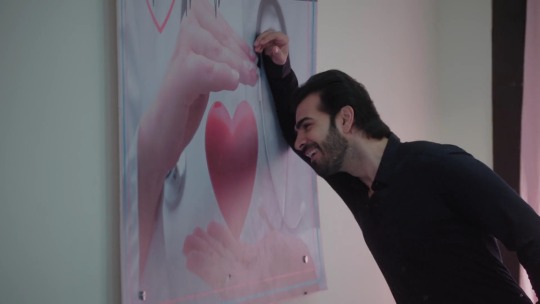





cute and all but fwding. i want the good stuff.

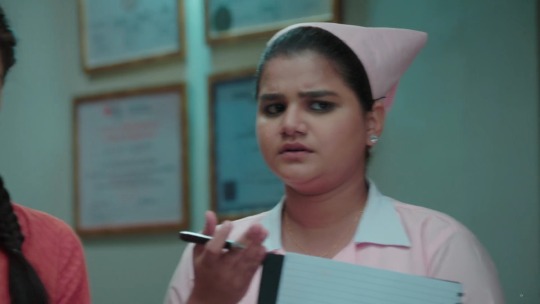






lmao these two are honestly my new faves.

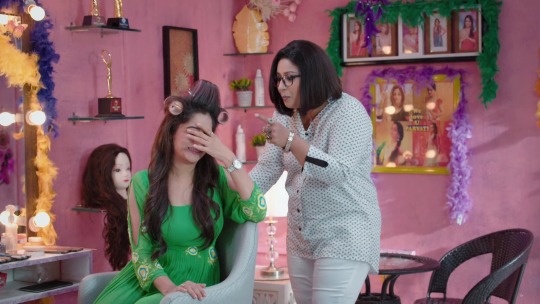


wholesome.


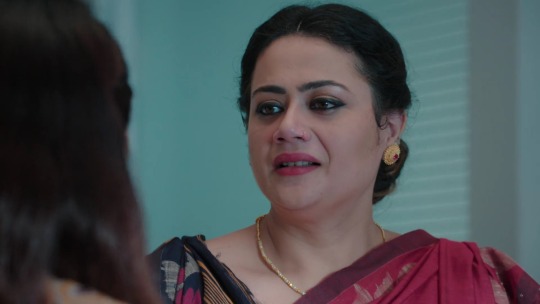
le. phod diya mere good mood ka gubbaara.
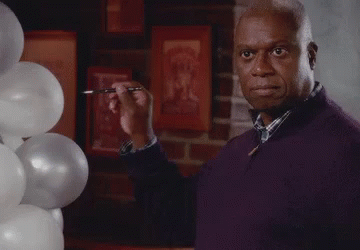

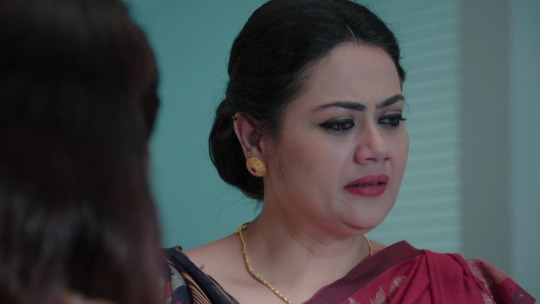
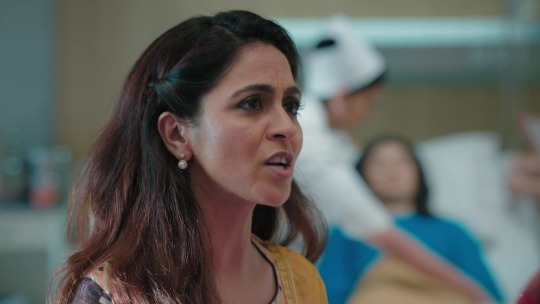
blah blah blah exposition.


oh boy. sona broaching topic of moving raima to sukhmani sippy hospital. girl why are you like this, always with the aa bel mujhe maar?!?!
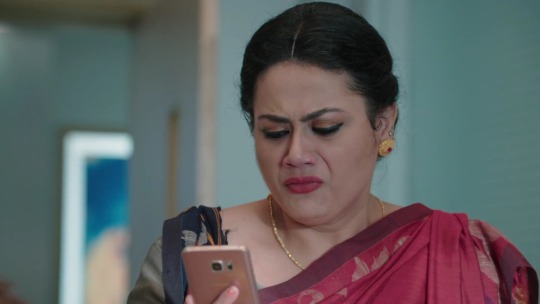

thank god aunty ne mana kar diya. balaa zyaada der talegi nahi but every second counts at this point.
but also, why would rohit, a cardiologist take charge of coma case? wouldn't it be under neuro?
anyway, mana kar diya, toh good.

"aaj ke baad sonakshi raima se nahi milegi!"
haaaye humaari itni achchi kismat kahaan, aunty.

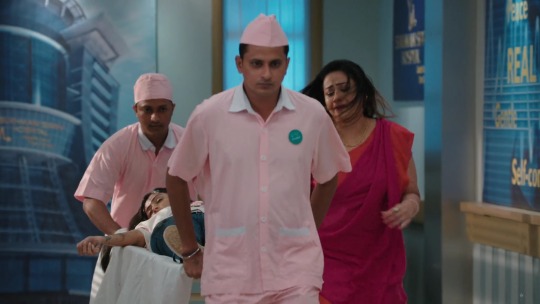

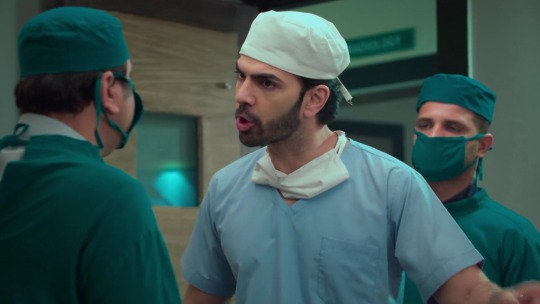

oh boy flashback mode.



seriously, what the fuck. operation ka outcome pasand nahi aaya toh surgeon ko thappad????? kaisi jaahil aurat hai yeh? she’s the kinda person doctors were protesting against a few months ago.

"raima rohit se kabhi nahi mil sakti." kaash. kaash aisa hi hota.


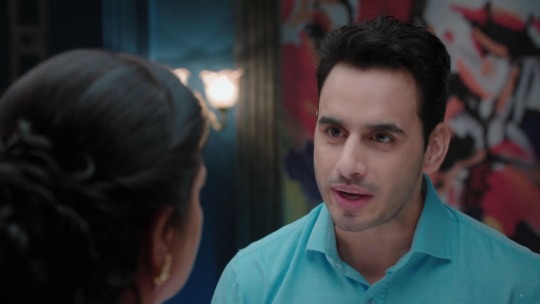

yaaaaaaaaaaaaas, call out your shitty mom, yk!
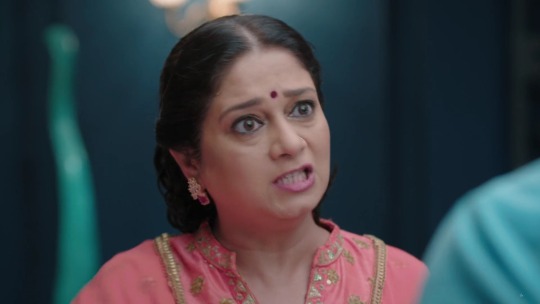






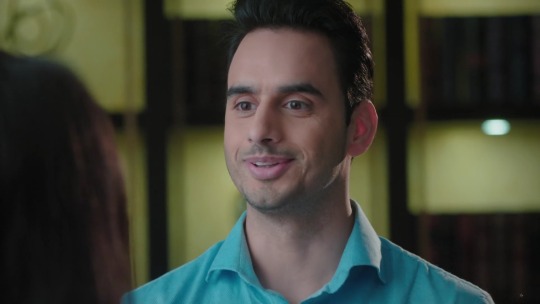
yk is best, i love him most, more husbands/dads should be like yk.

ohhhhhhh, veena ka budday haiiiiiiiii.










love these bewakoof betas of veena's. (beech waala bekaar hai, usko khaate se kaat liya hai maine.)



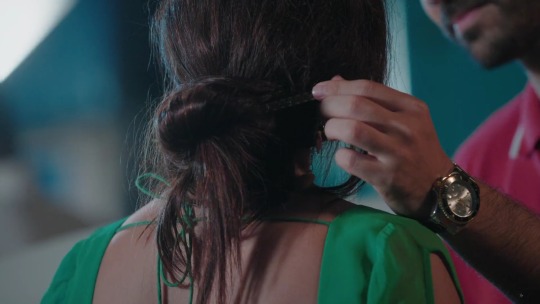


askjdhskjfhkdjfhdkj

will i ever get over how his voice gets all deep and saaaksyyyy for her now??? NOPE. NEVER.

please note ravi bhaiyya and sunita also chatting it up in bg. love is in the air!



"tumhi ne kaha romance ko badhne do; ab (unke) badhte romance ka faayda mujhe bhi ho raha hai." snort.



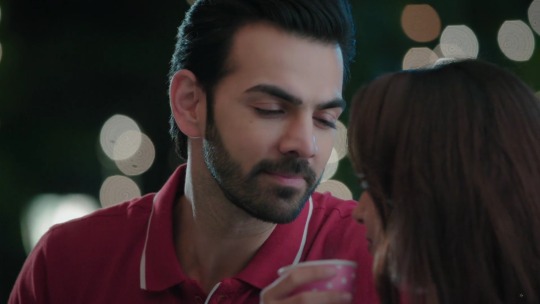

MAKE OUT MAKE OUT MAKE OUT MAAAAAAKE OUTTTTTT





UGH SONAKSHI KYUN KLPD KAR RAHI HO YAAR


waaaaaaay too many things in these two's lives are on 26th september.






oh wowwwwww i do not like this old rohit. hello? it's an emergency???? emergency tumhari mom ka birthday dekh ke thodi na aati hai. (i mean, i realise she could be bluffing, but he doesn't know that yet!)
....... oh. so he decided to do a surgery against neuro advice. but like, it was also his expert opinion that the glass pieces could do excessive damage to her heart, so..... i mean, it's neither here nor there. she had a 50-50 chance at all times.
also, did he not inform raima’s mom all this and make her sign a consent form before operating on her, as per SOP? like, even a blood transfusion requires a signed consent form, let alone a major surgery like this.
uh..... brain death is not the same as a coma??? lmao what?!?!?!? how could you just declare brain death just coz she had a stroke??????? THE TWO ARE NOT INTERCHANGEABLE TERMS, EVEN MY DUMB READS-MEDICAL-WIKI-ARTICLES-AND-PUBMED-PAPERS-FOR-FUN ASS KNOWS THAT. YO MAN, I’M BEGINNING TO THINK HE DESERVED THAT JHAAPAD FROM RAIMA’S MOM.





SHE WAS ABOUT TO SPILL THE TEA ABOUT WHAT HAPPENED THAT DAY TO HER, ASSHOLE. STOP INTERRUPTING HER!!!!!!!!!!!!!!!!! SHE LISTENED TO YOUR THING, AND YOU JUST DISMISS HER WHEN SHE’S TALKING ABOUT HER ISSUES????? RUDEASS.




abrupttttttttt jump to romance. good for them for compartmentalizing and all, but i can't get over that conversation (including the fact that he just.... declared raima brain dead when she REALLY WASN’T, lol) to be in the mood for this mushiness just yet.



mumma ko bhi saath lana hai. lol this should be fun.





pari ki bakchodi aise hi chalti rahi toh suman's due for another appointment with rohit within the fortnight.



life of a desi kid: 30 ke bhi ho jao, phir bhi afraid of parents' moods and having to ask them for shit.

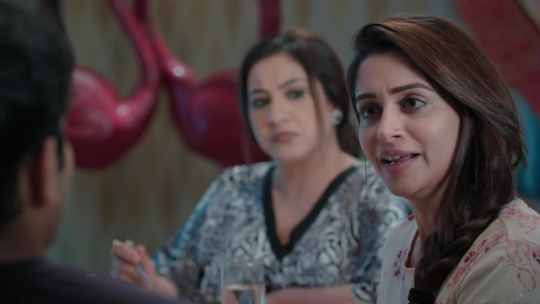




lol sona, enthusiasm thoda zyaada ho raha hai.


i am suman, suman is me; beta kisko chuna lagaa rahi ho????? maaaa hai woh tumhari.


since this scene has started i've been trying to figure out exactly what vegetable is it that they're eating???? beans?????? bhindi???? what????
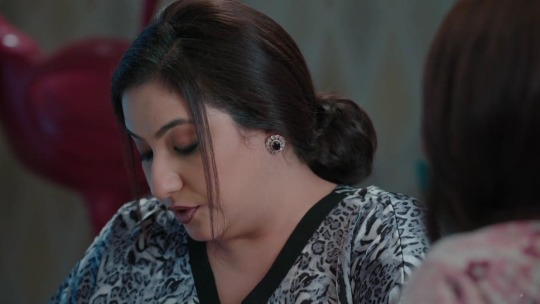


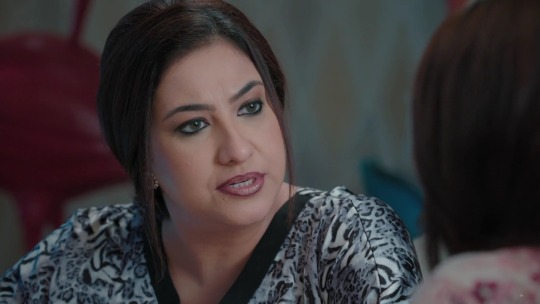


arre waaaaah. progressive suman! (prolly coz she needs sona's income for a while longer, but i appreciate the sentiment and am willing to give her benefit of the doubt, that she doesn’t want sona to give up her independence.)








haaaaaaye dil bhar gaya meraaaaaaaaaa. i always stan healthy family/platonic relationships in tellywood more than the romance.



idk what made her change like this, but whatever it is, i welcome it and hope it stays like this forever.


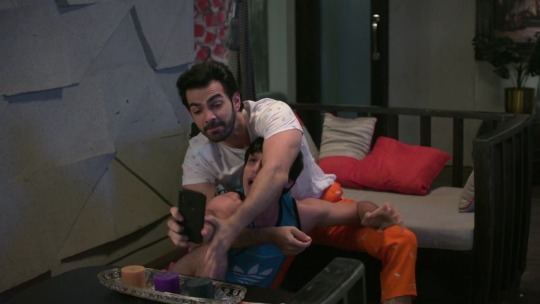




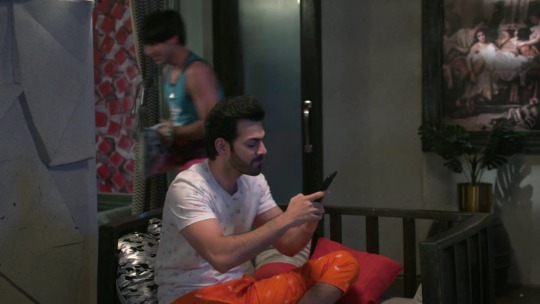
i love these two idiots more than life itself.
also lol ajit is such a younger sibling: “bohut gande ho aap yaar!”
ohhhhhhhhhhhhh boy. she gonna prank him into making a damn fool of himself in front of suman.


"mummys ka main favt hoon."


she thinking the same thing as me; lol pls your own mom can barely tolerate you. she likes sona more than she likes you.




har bees second jai mata di. sona, ladka tumhari mummy ko casually milne aa raha hai, mata ki chowki pe nahi.
good lord sis, rishta banne se pehle hi bigad jaana hai. jaise taise your mom has gotten around to liking him, with all these shenanigans........ bhaag ke shaadi karni padegi.
bright kapde. jfc he's gonna use sindhi superstar ranveer singh for outfit inspo, isn't he?!?! bro gonna end up walking in like:






oh sonaaaa, itnaaaa bhi khush mat ho, darrrrrrr lagta hai ki nazar lag jaayegi!!!! *latkaofies nimbu mirchi ka haar around her and rohit*




hey bhagwaaaaaaaaaaaaaaan, uth gayi.

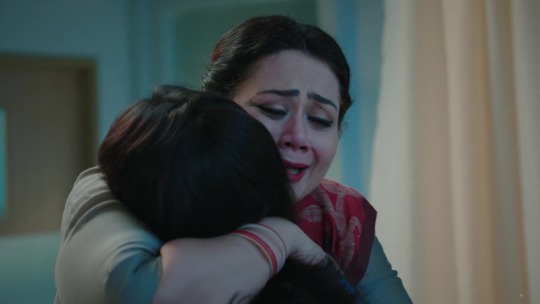


waaah. kya timing hai.
———————————————————————

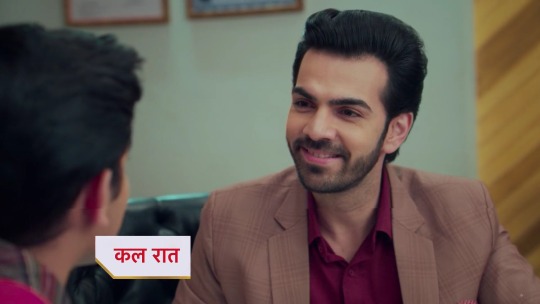
SURPRISE ENGAGEMENT?!?!?! TOO SOON!!!! TOO FUCKING SOON!!!!!!! TF IS WRONG WITH YOU ROHIT?!?!?!?!?!


oh jesussssss. this one is out and about and headed straight to sippy mansion.
19 notes
·
View notes
Audio
Welcome to Connecting ALS. On this episode, Mike and Jeremy talk to Dr. Barron Lerner, a medical doctor and director of the undergraduate bioethics curriculum at New York University’s Langone Health, and Dr. Neil Thakur, chief mission officer at The ALS Association. The conversation covers health care scarcity and rationing during the COVID-19 pandemic, historical examples of bioethics and what they can teach us about the current health care crisis, and what people living with ALS can do to prepare for their immediate and future health care needs. For more information about Dr. Barron Lerner, read https://med.nyu.edu/faculty/barron-h-lerner To read Dr. Lerner’s historical study of ethical challenges faced by health care practitioners read https://www.ncbi.nlm.nih.gov/pubmed/27802464?otool=nynyumlib&myncbishare=nynyumlib Department of Health and Human Services guidance on nondiscrimination in the health care system can be found here: https://www.hhs.gov/about/news/2020/03/28/ocr-issues-bulletin-on-civil-rights-laws-and-hipaa-flexibilities-that-apply-during-the-covid-19-emergency.html Find resources available to empower you to make informed decisions about your health care here https://alsadotorg.wordpress.com/2020/04/08/tips-to-help-the-als-community-plan-ahead-during-the-covid-19-pandemic/ The CDC recommends creating a plan for your household and community during the COVID-19 pandemic. Learn more here: https://alsadotorg.wordpress.com/2020/04/08/tips-to-help-the-als-community-plan-ahead-during-the-covid-19-pandemic/ This episode was produced by Garrett Tiedemann and is brought to you by The ALS Association’s national office and the Association’s Minnesota/North Dakota/South Dakota Chapter.
Transcript:
Dr. Neil Thakur: This is a scary time for our country, because a lot of things are changing very quickly and it can be a little bit hard to predict what's going to happen, but we can plan ahead for ourselves -- for the people we care about -- and that's going to make this a little bit easier.
Mike Stephenson (in-studio): Hello and welcome to another episode of Connecting ALS. I am one of your hosts, Mike Stephenson in Saint Paul, Minnesota. I am joined by my friend and colleague in North Carolina. Jeremy Holden. How are you doing this week, Jeremy?
Jeremy Holden (in-studio): Doing great. Mike, how are you ?
Mike Stephenson: Feeling pretty good. Starting to acclimate myself to the remote working environment. I know many of our listeners out there are probably doing the same thing, strange times that we're living in, but it feels like as a community, we're starting to figure this thing out a little more in terms of how we respond and stay safe and I'm encouraged by that.
Jeremy Holden: Yeah. I think aside from doing more crossword puzzles in the last couple of weeks than. I've done in the last few years, it is starting to feel weirdly like a sense of normalcy is setting in which, which is a good thing, I think, you know, kind of calms the mind a little bit.
Mike Stephenson: Yeah. Yeah, that's true. And I'm glad to hear that you're staying busy with the crossword puzzles.
Jeremy Holden: Listen, they are, uh, they're addictive. I, I think I'm going to, we'll need an intervention on the other side of this.
Mike Stephenson: Yeah, yeah. We'll talk more about that.
This week we had the pleasure to speak with two different experts about the ongoing pandemic with two very different perspectives in terms of, of the topics we discuss. First, we spoke with Dr. Barron Lerner from NYU and really examined the pandemic from a historical perspective with his specialty and one of his focuses in bioethics. Really fascinating conversation, Jeremy, of what we learned from how we can apply what's happening today with COVID-19 to some of the historical examples that have taught us things throughout the years.
Jeremy Holden: I've been reading a lot lately about COVID, as I'm sure many of our listeners have been. And one of the kind of narrative pieces that have been popping up is this question of of rationing and and strain on the health care system. And I know some States have posted guidance for triage policies and some of them have proven controversial, so very timely to hear from Dr. Lerner about some historical examples of the health care system dealing with, uh, with some similar issues that just with, you know, with different disease causes but similar kind of issues of bioethics.
Mike Stephenson: His perspective was really valuable. I'm excited for our listeners to hear that. The second half of our show is going to be an interview with Dr. Neil Thakur, the chief mission officer at The ALS Association. And those of you who have been listening to Connecting ALS have heard from Dr. Thakur before. He's an expert on really all things ALS. And we asked him first, kind of what he's hearing from the ALS community about ongoing needs and concerns during the pandemic and then some more specific questions about the topics that Jeremy just mentioned: health care scarcity, how to prepare for a hospital visit, what you should do if you feel like you're experiencing symptoms that are associated with COVID-19 again, so much useful information in that interview. I think this is a jam packed show.
Jeremy Holden: Yeah, I think I better just get out of the way and we can listen.
Mike Stephenson: Yeah. Let's, let's first dive into that interview with Dr. Barron Lerner from NYU.
Mike Stephenson: We are fortunate to be on the phone today with Dr. Barron Lerner of NYU Langone Medical Center. Thanks so much, Dr. Lerner for taking the time to join us today on Connecting ALS. My pleasure.
Mike Stephenson: And before we dive into some of the pandemic related questions that we have for you, doctor, can you give our audience a little bit of background on your role at NYU as well as maybe a simple introduction into the world of bioethics because we know that's a big part of your work?
Dr. Barron Lerner: Yes. I'm a practicing internist at Bellevue Hospital, which is the public hospital associated with NYU. So I see primary care patients. And then my academic title, as you said, is at NYU where I'm a professor and a lot of what I do is write about and teach bioethics. So that's really the field of medicine that looks at tricky problems that happen either as far as experiments or in the clinic and how to try to make the right decisions for doctors and patients when we confront these problems.
Jeremy Holden: According to the Kaiser Family Foundation, there are 728,000 hospital beds in the United States. That works out to a little more than two hospital beds per 1000 people. I think I'm getting these numbers right. Now that level of scarcity obviously built into the system. We don't anticipate 328.2 million people getting sick critically on the same day. Now obviously the COVID-19 pandemic, we're starting to see some real strain on those finite resources. So what are the ethical questions that come into play in that environment?
Dr. Lerner: So one thing we would say at the start is that most health practitioners, doctors and nurses are always advocating for their patients first and foremost. So when someone's in the hospital and they're sick and there are resources available, we push as hard as we can to try to get our patients what they need. What makes this situation different is there's the potential for there not being enough resources. So there may be so many sick patients and we're seeing this a little bit at some of the New York hospitals that there may be a need to ration the available technology. In other words, give certain patients an available technology and deprive other patients that technology simply because there's not enough there. So that's a big bioethical issue that has come up in the past and other areas of medicine, but is front and center right now with the COVID epidemic.
Mike Stephenson: Doctor, thank you for explaining it in that way. You have published a number of articles over the years, throughout your career on historical examples of controversial periods of medicine and medical research from a bioethics perspective. In your opinion, what can some of those past examples teach us about how we should be approaching the current scenario with a pandemic?
Dr. Lerner: Well, it's funny, I've been developing a sort of syllabus for the medical students because this has all of a sudden become such a hot topic and they're much more interested in history and ethics than they ever were. Two of the examples that I've been using historically and teaching them, one was a famous incident in Seattle in the early 1960s where they had just invented a way to give kidney patients with kidney failure, hemodialysis for the first time, and now that's routine for people who whose kidneys are failing. You put them on a dialysis machine, but they're only small number of dialysis machines in Seattle and the medical society there decided to get a committee of ordinary citizens to decide which people in Seattle should get the small number of ventilators and very long story short, the committee was very devoted and dedicated, but wound up basically selecting people using value judgements.
They picked people who had big families. They pick people who went to church, they picked people who had certain jobs. So that's one of the historical examples we use to try to remind us not to use value judgments when we're dealing with our patients to try to give all patients an equal chance. The second example uses transplantation, so there has been for a long time, unfortunately not enough transplant organs to go around. So every day people we have to decide who gets the liver, who doesn't, who gets a heart, who doesn't, where they should go on the list. And there we've tried building on the Seattle experience to give these organs out in the way they're most useful. How will we save as many lives as we can and give them to people who are apt to live the longest with those organs. It's a very utilitarian concept. Both of those examples I think help us try to decide what we might do were we short for example of dialysis machines now or ventilators for COVID patients.
Jeremy Holden: It's oddly almost reassuring to hear that the health system has gone through similar situations before, dealing with strain on the system. And you know, we've come through, we can learn from that. So how do those decisions then get made today? What's the guidance when impossible decisions do have to be made?
Dr. Lerner: Well, most hospitals and have come up with some type of a triage system. New York State, for example, has one that they've up with for this type of situation. And hospitals either have their own or are trying to tweak the New York State guidelines. So there's been a lot of discussion of this. And among the points that have been stressed is you shouldn't be discriminated against. So just because for example, you're a certain age or you have a certain disease or you have a certain disability, you should not necessarily be dropped to the bottom of the list. Now that doesn't mean those factors aren't relevant because if they weight into your ability to survive the bad pneumonia that we get with COVID, so medically you're not as good a candidate, that would be something that's relevant, but they shouldn't be the determinative factor. The other thing about this particular epidemic that is a potential challenge would be the idea that we would actually take someone off a ventilator and give it to someone else.
That's gotten a lot of discussion in the world of ethics. Normally we don't do that when we have enough resources. If you go on a ventilator and you still have a chance of recovery, we keep you on the ventilator because we got enough ventilators, but this pandemic at least raise the scenario where because there would be so many patients and not enough ventilators, would you consider taking somebody off a ventilator that wasn't doing well, that might not recover and give it to someone who was earlier in the disease with a better chance of recovery. That is the sort of thing that's been alluded to in these earlier examples, but it's nothing we ever do on a day to day basis. So the notion of doing that is very daunting.
Mike Stephenson: It is. It's frightening to think about and we can only hope that with the current guidelines in place that we can do our best to prevent many more of those kinds of decisions having to be made right now with what's going on with COVIED-19. It seems like hindsight can be a dangerous thing in evaluating these kinds of ethical situations from decades ago because at the time those medical professionals were probably facing contextual pressures that we don't always take into account or know about and of course they didn't have the volumes of information and data that we have now all these years later. How do you kind of explain that to your students, whether you're applying it to what's going on with a pandemic or just in general?
Dr. Lerner: Yeah, that's a big topic. You know, any historian trying to teach history makes that point very clearly. What we're not trying to do when we look back at these historical examples is judge by our modern standards. So just to go back to that Seattle example for us to say, Oh, those people in Seattle were so naive or stupid or classist and they just pick people like themselves to get dialysis. Well they did in large part do that. But to judge them from our modern perspective, you don't learn a lot. What you do try to learn is how did those people in that particular situation make their decisions and those are the sorts of factors that are always still at play. So factors like economic status, factors about pressures, cultural pressures, needing to help, wanting to help people, you know, not understanding other people's disadvantages. Those are the sorts of things that we continue to struggle with and can learn from the past experiences of how others try to deal with it and then incorporate those conflicts into our modern thinking.
Jeremy Holden: An important point that strikes me as, as you say that doctors don't want to be in this position, right? I mean this isn't, these aren't questions that doctors want to be asking and debates that they want to be having. What should patients know? What's your advice for patients where thinking this cough is pretty bad? I think I have to go to the hospital. What do patients need to know?
Dr. Lerner: Just your first point because it raised a point that's very important. The doctors who would be making these decisions is not the doctors taking care of you. So that would be very hard for both the doctors and the patients to not think that their doctor wasn't doing everything they could for them. So most hospitals have come up with system where there'd be a panel of other physicians and experts helping with these decisions, which is ethically very appropriate. You know what I'd say to patients is, the good thing about having this discussion in advance is that were this to happen people have been thinking about it. People are thinking about how to use resources as best as possible and people are trying to be as transparent as possible. The other great advantage to these discussions coming out about proper use of ventilators is that we're also encouraging patients and their doctors to have meaningful discussions in advance about how aggressive they might want their care to be.
So let's say for example, you're a patient in your seventies and you have some COPD from smoking in the past and you come down with COVID. You might want to tell your doctors, "Look, if I get so sick with COVID and I have such bad lung disease to start with and you think you're never going to be able to get me off the ventilator, then don't keep me on the ventilator or don't put me on the ventilator in the first place. I don't want to die in a ventilator." It's a chance to discuss your illnesses more broadly in the context of COVID and what your goals are. Those goals might be very different than someone who was healthy in their 40s or 50s for example, and got COVID. Well you might want to be more aggressive there. So you know, one thing I would say to patients if are having respiratory problems, if you've got to be admitted to the hospital or even worse to the ICU, try to have -- to think more broadly about technology and what you might want or not want and try to communicate this to your doctors in advance before there is any sort of crisis.
Mike Stephenson: That makes a lot of sense. Thank you for clarifying both of those points, doctor.
Dr. Lerner: It's also good to know that if you're experiencing worse symptoms than this, you shouldn't simply stay at home and and hope for the best. There are technologies available for us to use to help people breathe. There's some of these medications that are controversial that people are using, so absolutely if you're concerned that you're not feeling well, call your doctor, go to an emergency room, and the good news is people are her very ramped up to address your problem and tell you what you do and don't need. So it might be scary to think about going out of your house and going to the doctor now when everybody's telling you stay at home, stay at home, but if you do have worrisome symptoms, it is crucial to call your doctor and get some advice about which you should and shouldn't do.
Mike Stephenson: Thank you so much Dr. Lerner for that really insightful perspective on both your bioethical background in medicine as well as a practicing medical professional with your experience with COVID-9 I really think that our audience is going to find this very helpful.
Dr. Lerner: Glad to help out.
Jeremy Holden: Thanks again. Dr. Barron Lerner at NYU for a fascinating look into some historical examples of of bioethics in the health care field and really kind of putting into context some of the questions that health care practitioners and and some of their regulatory agencies are dealing with today.
Mike Stephenson: And as promised, we followed up that conversation with another with Dr. Neil Thakur, chief mission officer at The ALS Association. Dr Thacker gets into some specifics about how the pandemic is impacting the ALS community. Let's hear from him now.
Mike Stephenson: We're joined on the phone by Dr. Neil Thakur, chief mission officer at The ALS Association. Dr Thakur, you are becoming a regular contributor on Connecting ALS. Thanks for bringing your expertise to the table once again.
Dr. Neil Thakur: Thank you guys. It's nice to talk to you.
Mike Stephenson: It's great to have you back. We had a conversation earlier with Dr. Barron Lerner from NYU who gave us a look at the ongoing COVID-19 pandemic from a broader bioethics perspective. It was fascinating really, and we wanted to talk to you, Dr. Thakur about how some of the decisions being made at the state and federal levels and even within hospital systems themselves are impacting the ALS community. But before we get too deep into that, can you share anything about what you've been hearing from families living with ALS about kind of their biggest needs or concerns or questions at this point?
Dr. Thakur: I think the biggest concern that everyone has is that they or someone in their home is going to get COVID-19 and so I hear about families working really hard to practice social distancing, to be really careful about everyone they come into contact with and that does cause some complications with their care. Sometimes people are worried about family coming to visit or care workers coming to visit. And I think those are all really smart things to be concerned about. And so I'm hearing some really nice stories about people engaging over media through all, you know, online and video chat. And I think it's really nice that people are still finding a way to be connected and engage and without being in physical proximity.
Jeremy Holden: With that in mind, if somebody with ALS does start to develop symptoms that they feel is consistent with what we've come to understand is COVID-19 symptoms, what should they do? What's their first call? What would you tell someone if they asked you said, Hey, I think this seems like it might be COVID-19 what should I do?
Dr. Thakur: We would recommend that they contact their primary care doctor, someone a physician who who knows them if their symptoms aren't very severe, and then that person, that clinician can advise them on how to go forward. Of course, if someone has a really high fever or some serious trouble breathing, a lot more shortness of breath or trouble breathing than normal, then they do need to call 911, but they also need to let their EMS team know the people who are taking the hospital and the people in the emergency room know that they have ALS.
Mike Stephenson: Yeah. That's a big part of it. Of course.
Neil Thakur: Yeah, and it's also important anytime you're talking about going to a, a clinic, a hospital, or having the ambulance workers come to you, you should let them know that you think you may have COVID-19 and definitely that you have ALS. As everyone who has ALS knows it's an unusual disease that not everyone in the health system knows how to manage and so we can talk, if you like, about some of the things that people could do to prepare themselves, their caregivers and the clinical staff that they're going to be encountering. So mistakes are less likely to happen.
Mike Stephenson: Yeah. Can you tell us a little bit about that, Dr. Thakur? Just from that perspective, you mentioned preparedness and are there proactive steps that families living with ALS -- caregivers, loved ones -- should be taking to stay particularly safe or prepare for different scenarios like you mentioned going into a hospital or clinic. Is there information they should be bringing with them? Questions they should be ready to ask once they arrive?
Dr. Thakur: Yeah, I think there's some things people could do. Even now, even if they don't, I think they have COVID or they're going to get it and they're feeling pretty comfortable. This is still an opportunity to sort of plan for the worst case scenario. So everyone is prepared and so if you go on our website, we recently had a blog about this and a lot of this says just the information we recommend anyway since people may have medical emergencies that need to go to the hospital at the last minute. And so to prepare any documents ahead of time including any special instructions or advanced directives. So you have those documents ready to download resources like our Association's, medical information packet and information card. We also have a phone app that people can use to help convey information about the fact that they have ALS and they may have problems communicating and special management with oxygen and so forth. You also want to consider packing a go bag, so you or your care taker can take it with you and it's ready to go with you on short notice if you have an emergency or if you live with a caregiver and you're dependent on them and they have an emergency, they need a go bag and then you need one for yourself. So whoever comes in to take care of you as the material, they need to step in.
And then of course every plan needs a backup because things don't always work the way that we hope they do. And so talking to your friends and your relatives about your plans and your backup care and so things can happen more smoothly in what can sometimes be chaotic time. Also, if you have a local fire department or a local ambulance squad, if you live in a relatively small area, it does make sense to contact them in advance and let them know that you have ALS and special needs and so they can have a plan for that as well. You know, you may be the only person with ALS that they get to interact with and so it might be good for you to contact them in the future. And then of course, you know there's the intermediate, right? There's the fact that you may have to go to the emergency room on short notice for, for anything. It could be COVID or something else. And then also it's just an opportunity if you haven't already to think about your home care and the number of people who are entering your residence, letting them know if you have people who are helping with infusions or equipment or just maintaining the house or doing work around the house. Remind them that if they think they've been exposed or if they have symptoms to not enter the house unless they have special precautions and training and you're comfortable with what that is, make sure that they're washing their hands upon entry before they touch you. It would be really helpful if caregivers have new correctly fitting personal protective equipment, proper masks, proper gloves if they're coming to work on you directly and then after they leave, if you could wipe down the stuff that they've touched themselves. I think that that can be really important. Doorknobs, counters, medical equipment, screens, things like that. That I think is important that we think about it. People need this care. It's really important and there's a way to do it safely.
Jeremy Holden: You touched on a lot of great resources there and we can share those in the show notes so people can find them very easily. Dr. Thakur, you mentioned if you have to go to the clinic, if you have to go to the hospital, it could be COVID related, could be related to something else. One of the concerns that has risen in the discussion of the stress on the health care system. Is the number of beds available and this has led to some concerns about do people get put in the back of the line waiting for that or are these real concerns? Is this something that the ALS community needs to worry about?
Dr. Thakur: Well, I think it's a concern it's so it's a concern a risk that could happen as our health systems get overwhelmed. I'm not hearing about it actually happening, but I think we need to be prepared that it might. And so we are concerned that some triage or rationing policies that hospitals or regions may need to put into place unfairly deny medical care to people with ALS. And so this is not a concern that's unique to the ALS community, but it is a potential risk for the ALS community. And so one of the things that we've been doing with the Association, is working with a lot of other groups, a lot of other disability groups to make sure that any kind of rationing policies or triage policies are consistent with the law and are as fair as possible. And so one of the things we're fighting hard for is for every state and town and hospital to recognize that ALS, the diagnosis should not be treated as an automatic criteria for excluding or including people into any kind of treatment. But rather everybody should be assessed individually, assessed on any number of factors that may be weighed in a triage decision. And of course these are extreme decisions made under extreme circumstances. And like I said, it's very unlikely that anyone will be in this situation. But I think it's important that we are clear about what our standards are and that is our standard -- no automatic decisions based on diagnosis. Everyone gets treated like an individual and their individual factors need to be considered.
Mike Stephenson: Thank you for explaining it in that way, doctor. It's reassuring to know that those conversations are being had in terms of advocating for those living with ALS and really many other medical conditions out there in the world. Are there things that families, uh, living with ALS and individuals living with ALS can do to proactively advocate for themselves and that situation? So they'd be talking to their legislators, should they be talking to their health care providers in advance or is it more of a case by case basis?
Dr. Thakur: Well, you know, we're talking about the health system that could potentially get overloaded and when it gets overloaded, it's not going to be overloaded for a long period of time. But for critical windows, narrow windows of time where things might just get extremely chaotic in a specific hospital, in a specific emergency room. And you can hear that coming, for example, you might hear the hospitals building overflow treatment facilities at a sports arena or you know, some large indoor conference center or something like that where they're making plans to treat people outside of the hospital because they're expecting a huge volume of people. And that's happening some of the cities on the coasts right now. And so those plans are in some ways that's scary. But on the other hand, it's really good because everybody's thinking about their capacity and building in capacity for the surge so they can handle these situations with less chaos. But when you do, if you do find yourself in a hospital or an emergency room during those peak times, things are going to be extra difficult. And so the more you can do to convey that you may need a communication device or that you may need special management for oxygen or something, or that you need a caregiver with you or one of your family members with you, it's really important to be clear about what that is, what that case is and why that's so important.
And you're going to be talking to people who might be extremely tired and overwhelmed and just trying to do their best and so for you to have that material planned out in advance for you to be thinking about that in advance before you walk into that chaotic situation would be really helpful. And that's where the material that the Association has developed with a lot of feedback from a lot of clinicians and a lot of other groups can be really helpful for just explaining everything clearly. I think the key message is for everybody to just do what they can to plan ahead for themselves and we do have a fair amount of material that people can look at to have that plan. This is a scary time for our country because a lot of things are changing very quickly and it can be a little bit hard to predict what's going to happen, but we can plan ahead for ourselves, for the people we care about and that's going to make this a little bit easier. We certainly can control our risk and everything I'm hearing about the ALS community is, we're doing a lot to, to reduce our risks. And I also think we can do a lot of too, the plan to help any hospital state or emergency medical crisis to be handled better. And we're trying to support that with the information out on our website. And we'd love to hear more about stories that you may have of your interactions if you have to go to the hospital, how it's working, if you're running into problems. That kind of thing is really important to us. If we do hear about a problem, we want to intervene and do what we can to make this better.
Mike Stephenson: Thank you so much for that really practical advice and information about, uh, how we all should be preparing, uh, during the pandemic and particularly families and, uh, caregivers and loved ones living with ALS so that we're doing everything we can to stay informed and stay safe during the pandemic. Thank you doctor for joining us today.
Dr. Thakur: Thank you.
Jeremy Holden: Thank you again to our guests, Dr. Barron Lerner at NYU and Dr. Neil Thakur at The ALS Association for a look into some historical examples of the health care system dealing with strain and some bioethics questions that can help inform the questions that we're asking today. And then looking specifically at some impact of the COVID-19 pandemic on the ALS community.
Mike Stephenson: There was quite a bit of online information referenced in today's episode and you can find links to many of those resources in our show notes, so be sure to check those out. And if you have questions or feedback on today's show, you can find Connecting ALS on Facebook and Twitter and submit those questions and feedback to us and we'll get back to you as soon as we can. Thank you all so much for listening at Connectingals.org and wherever else you get your podcasts. Be sure to subscribe today if you haven't already. Connecting ALS is produced by Garrett Tiedemann of the Minnesota, North Dakota, South Dakota chapter of The ALS Association.
Thank you all for listening. We will connect with you again soon.
0 notes
Note
Yo Sam! So i read in some article that antipsychotics might interfere with testosterone levels, but i couldnt find any proper or trans specific info on this. So im wondering if any of ur lovely followers has any experience with being on antipsychotics and t at the same time, and if so, could they contact me? Thank u!
This is definitely important, and I’m sure info like this will be of help to other trans guys, too. I found a few articles about it just from a quick google search. None of them are about trans men, but they still might be useful to read: http://www.peaktestosterone.com/Testosterone_Antipsychotics.aspxhttps://www.ncbi.nlm.nih.gov/m/pubmed/22538969/https://www.ncbi.nlm.nih.gov/m/pubmed/18838228/Hope these help. But can any other trans guys help out? Feel free to reblog this post and add onto it, y'all. If you can’t help with info, reblog this to spread it around.
#ask#trans men#transgender#trans#antipsychotics#trans man#trans male#trans boy#ftm#hormones#testosterone#rat-bf
63 notes
·
View notes
Photo

Dear Mark: How Do Fermented Food and Meat Interact? http://bit.ly/2SWR6U6
For this week’s Dear Mark, I’m answering a question from a reader about a topic I thought I’d covered (so did they) already. A quick look through the archives (hey, I can’t remember absolutely everything I ever wrote) showed that I had not, so here we go. It’s all about whether fermented foods—sauerkrauts, kimchis, pickles, yogurts, and any other food that has been acted upon by probiotic bacteria—make eating meat healthier and more enjoyable. From the start, I suspected that they do, but I had to confirm it in the scientific literature.
Let’s find out:
Hi Mark, I’m trying to find an article on why you should eat ferments with meat, (how it breaks down the fats) our mutual friend Hilary, AKA #thelunchlady ? and I are working on getting some of the high end butcher’s around LA to understand this, so they can help educate their customers. I was hoping to find info on your site, but now hoping you might write one for us
As for the effect you mention—fermented food breaking down the fat in meat—I’m unaware of any evidence. I am aware of a beneficial effect of fermented food on carbohydrate metabolism though. See, lactofermentation produces acetic acid as a byproduct. Acetic acid provides the “sour” flavor, the acidity of a batch of sauerkraut or pickles. It’s also what makes vinegar so sour, and there’s a long line of evidence showing that vinegar improves glucose tolerance and reduces the blood glucose load of high carb meals.
A 2017 review of the evidence found that vinegar was significantly effective at reducing both postprandial blood sugar and insulin levels.
It works in type 2 diabetics who eat vinegar with their high-carb meals, lowering the blood glucose response.
Research shows that acetic acid, rather than some other component in the vinegar, is the active component responsible for the effect on blood sugar. Anything with acetic acid should work, like food ferments.
That’s carbohydrate, and it’s good info, but you didn’t ask about carbs. You asked about meat. So, is fermented food pointless when eating meat? Not at all.
There are many examples of traditional cultures and cuisines making it a point to serve fermented foods with meats:
Koreans, kimchi, BBQ.
Germans, sauerkraut, sausage.
Japanese, pickles/natto/miso, meat/fish.
Indians, yogurt/pickles/chutneys, meat curry/tandoori chicken.
Italians, cheese, salami (itself a fermented meat).
They may not have “known” about the biochemistry. They weren’t citing PubMed studies. But over the many hundreds of years, these pairings emerged as combinations that just worked and made people feel good and the food go down more easily.
What could be going on here?
One thing I’ve stressed over the years is the importance of consuming foods high in polyphenols, not only for their isolated health benefits but for their ameliorative effects on the potential carcinogenicity of meats—particularly high-heat cooked meats (barbecue, grilling, searing). If you eat foods high in polyphenols, like blueberries or leafy greens, with your meat, that meal becomes healthier. It reduces the formation of carcinogenic compounds and reduces the peroxidative damage done to the fat.
And if you take a food high in polyphenols and subject it to fermentation, those polyphenols change and actually become more effective.
Red wine is one such fermented food that is higher in polyphenols than its non-fermented counterpart. The fermentation process alters the polyphenols already present in the grapes, making them more bioavailable and more effective, and creating entirely new compounds in the process. One reason red wine pairs so well with steak on a subjective level is that it actually reduces the formation of toxic lipid oxidation byproducts in “simulated digestion” studies that attempt to recreate the stomach environment after a meal, inhibits the absorption of those toxic lipid byproducts, and, when added to meat marinades, reduces the formation of heat-related carcinogens when you cook the meat, even over open flame. The responsible compound for these effects in red wine isn’t the alcohol, it’s the polyphenols. Grape juice doesn’t have the same effect.
This applies to everything. Fermentation of almost any other food, from beans to cabbage to garlic, also changes and improves the antioxidative capacity of the polyphenols. And the more polyphenols a food has, and the more effective they are at reducing oxidation, the healthier they’ll make any meat we eat.
Fermented foods also contain probiotic bacteria, and there’s some limited evidence that certain bacterial strains can actually enhance metabolism of cooked meat carcinogens.
So, in a roundabout way, fermented foods actually are improving the way we digest the fats in meat. They aren’t quite “breaking them down,” but they are allowing us to metabolize them in a healthier way that produces fewer toxic byproducts and inhibits our absorption of the toxic byproducts that do slip by.
This actually gives me a good idea for a post: A series of elevator pitches that inspired readers can use to lobby restaurant owners, butchers, doctors, and anyone else about the otherwise complicated health and nutrition topics we’ve bandied about on this blog for a decade. Most folks’ brains will glaze over when you start talking “omega-3s” or “peroxidized lipids” or “oxidized LDL particles” or “high heat carcinogens,” but it’s still important information. I think I’ll start putting that together in the next few weeks, starting with today’s topic, and I could really use your help. What other topics have you wanted to broach but can’t figure out how to make relatable, simplistic, or elegant enough to drop in casual conversation with professionals (or friends) who could help make a difference?
Let’s get a list going and try to knock this out.
That’s it for today, folks. Take care and be well. Thanks for reading!
//
Want to make fat loss easier? Try the Definitive Guide for Troubleshooting Weight Loss for free here.
//
References:
Shishehbor F, Mansoori A, Shirani F. Vinegar consumption can attenuate postprandial glucose and insulin responses; a systematic review and meta-analysis of clinical trials. Diabetes Res Clin Pract. 2017;127:1-9.
Liatis S, Grammatikou S, Poulia KA, et al. Vinegar reduces postprandial hyperglycaemia in patients with type II diabetes when added to a high, but not to a low, glycaemic index meal. Eur J Clin Nutr. 2010;64(7):727-32.
Mettler S, Schwarz I, Colombani PC. Additive postprandial blood glucose-attenuating and satiety-enhancing effect of cinnamon and acetic acid. Nutr Res. 2009;29(10):723-7.
Gorelik S, Ligumsky M, Kohen R, Kanner J. The stomach as a “bioreactor”: when red meat meets red wine. J Agric Food Chem. 2008;56(13):5002-7.
Gorelik S, Ligumsky M, Kohen R, Kanner J. A novel function of red wine polyphenols in humans: prevention of absorption of cytotoxic lipid peroxidation products. FASEB J. 2008;22(1):41-6.
Kanner J, Gorelik S, Roman S, Kohen R. Protection by polyphenols of postprandial human plasma and low-density lipoprotein modification: the stomach as a bioreactor. J Agric Food Chem. 2012;60(36):8790-6.
Harbaum B, Hubbermann EM, Zhu Z, Schwarz K. Impact of fermentation on phenolic compounds in leaves of pak choi (Brassica campestris L. ssp. chinensis var. communis) and Chinese leaf mustard (Brassica juncea coss). J Agric Food Chem. 2008;56(1):148-57.
Kimura S, Tung YC, Pan MH, Su NW, Lai YJ, Cheng KC. Black garlic: A critical review of its production, bioactivity, and application. J Food Drug Anal. 2017;25(1):62-70.
Nowak A, Libudzisz Z. Ability of probiotic Lactobacillus casei DN 114001 to bind or/and metabolise heterocyclic aromatic amines in vitro. Eur J Nutr. 2009;48(7):419-27.
The post Dear Mark: How Do Fermented Food and Meat Interact? appeared first on Mark's Daily Apple.
from Mark's Daily Apple http://bit.ly/2QP5DzF via IFTTT http://bit.ly/2EXgy8I
0 notes
Text
A Note on HIV (long post)
Ok so i want to share some facts about HIV bc it's an area I'm really passionate about and unfortunately news around it is prone to a lot of sensationalism. It's really important to me that the right facts get put out there because it's such a pressing issue. Probably the most important point is #2 plus its sub points. Also I want to say that there should be zero social stigma towards seropositive ppl! HIV/AIDS doesn't change who you are as a person and being seropositive in 2017 has a typically positive prognosis, especially if caught early! Even if it isn't it's just overall shitty if you treat someone differently for having HIV. Like. Basic respect please. *warning: I'm on mobile so it's hard for me to put sources in. Also a lot of this is stuff I just learned in the lab I worked in. I suggest doing research of your own. I'd really recommend reading the Harvard AIDS Initiative's 90-90-90 plan. If you can't find that online hit me up and I can send you my copy! Also PubMed is a great resource for info on medical research.* With that in mind let's get started: 1) it is impossible to cure HIV. Besides the fact that there are 12 major variants within the disease, hiv is a super rapid mutator. This is basically the same reason why there can't be a cure for the common cold. 2) antiretrovirals are incredibly successful! PreP and Pep (pre- and post-exposure prophylaxis) work really well to ensure viral suppression. I haven't read a lot about PreP but I know that if you take it consistently it greatly lowers your chance of contracting HIV and is a great option for those with positive partners or who just want to be vigilant. There are a lot of options for PeP but in general the standard regimen is to start on tenofovir, which on its own has a 74% chance of viral suppression. If combined with AZT that goes up to 91%. Plus there are more drugs out there. ANTIRETROVIRALS ARE THE CLOSEST WE CAN GET TO A CURE. When you're in viral suppression it means it's practically impossible for the HIV to develop into AIDS. 2b) it was super cool when they cured a newborn of HIV! Usually "mother to child" transmission is prevented by antiretrovirals the carrier takes while they're pregnant. Sometimes the child still has HIV when they're born. Luckily while they're still "fresh" it's easier to treat, thus the "cure". Sadly this doesn't work in adult humans. 2c) 90% of the news articles about "curing" HIV are to do with viral suppression. Sometimes they're about new antiretrovirals or combinations of them, other times they're about hospitals and doctors doing a really good job at administering the antiretrovirals. These articles are still really important!! They're just usually about stuff that already exists so they're not national headlines. 3) the reason the HIV/AIDS crisis is still so huge is because of healthcare and health insurance issues. Yall know that healthcare is a huge issue in the US and this is literally one of our biggest hurdles. 4) a large portion of research is going toward a vaccine. Vaccines are the most effective way by far to stop viral outbreaks. Sadly we haven't made a ton of progress yet because HIV is complex as hell. BUT the bright side is there are so many talented and passionate researchers out there working really hard at it. Anyway if you're still reading thank you. This obviously isn't the whole picture but I really wanted to make a few common misconceptions clear and elaborate on them. Feel free to talk to me if this is something you want to know more about!
2 notes
·
View notes
Text
Can we move on?
By CHADI NABHAN MD, MBA, FACP
Every so often, my cynical self emerges from the dead. Maybe it’s a byproduct of social media, or from following Saurabh Jha, who pontificates about everything from Indian elections to the Brexit fiasco. Regardless, there are times when my attempts at refraining from being opinionated are successful, but there are rare occasions when they are not. Have I earned the right to opine freely about moving on from financial toxicity, anti-vaxers, who has ‘skin in the game’ when it comes to the health care system, the patient & their data, and if we should call patients “consumers”? You’ll have to decide.
I endorse academic publications; they can be stimulating and may delve into more research and are essential if you crave academic recognition. I also enjoy listening to live debates and podcasts, as well as reading, social media rants, but some of the debates and publications are annoying me. I have tried to address some of them in my own podcast series “Outspoken Oncology” as a remedy, but my remedy was no cure. Instead, I find myself typing away these words as a last therapeutic intervention.
Here are my random thoughts on the topics that have been rehashed & restated all over social media outlets (think: Twitter feeds, LinkedIn posts, Pubmed articles, the list goes on), that you will simply find no way out. Disclaimer, these are NOT organized by level of importance but simply based on what struck me over the past week as grossly overstated issues in health care. Forgive my blunt honesty.
● Can we have fewer posts and papers that describe how immoral financialtoxicity is? We all know it’s a problem and our patients suffer the most from it. But continuing to mention the gravity of financial toxicity? Well, that’s just so 1999. At this point, I want more posts and papers discussing strategies on how we move forward. For example: How can we overcome financial toxicity? Even if our patients appreciate us continuing to discuss the same problems repeatedly, they deserve better answers from us.? Let me illustrate. Say I am your patient and I complain to you about persistent nausea. You, as the doctor are empathic and actively listen to my concern, yet my nausea persists. I appreciate the attention and the listening you offer, but at some point I need something to control my nausea. If you don’t have the remedy, I am more annoyed because you keep restating my problem, agonizing me further and still not offering me a solution or showing any attempts to try to find a solution for my issue.
● I am growing tired of the debate on “vaccines”. Isn’t it clear that by now, if there are people who do not believe in vaccines, there is not much we can do to sway them differently? There comes a time when one must decide where to concentrate his/her energy. I am all for having an open dialogue. But, a dialogue with the intent of changing one’s opinion requires both parties to be open to each other’s views and that one of them might potentially change course. Based on what I have seen over the past few months, those opposed to vaccines will not be persuaded by strong evidence or the amount of data they are given. So, maybe we should direct our attention to something that brings better results? Say, describing financial toxicity one more time? OK, that was not nice.
● There are many stakeholders in the health care industry, but the ultimate stakeholder is the patient. Aren’t we all previous patients, current patients, or future patients? I am growing tired of folks pointing fingers at each other as the solely responsible party for the current state of affairs. Academics blame pharma, pharma blames research costs, insurers blame both, patients blame insurers, physicians blame the system, and the list goes on & on. We need to be fair and practical if we are to approach our health care system in a methodical way that lends towards some solutions. The reality is, EVERY entity is important in assuring proper delivery of life-saving drugs to patients who stand to benefit. We all can name hundreds of therapies that were developed outside the walls of academic and university labs, and similarly name many medication that required collaborations between academia and pharma to achieve success. Pharma defends itself from being the culprit, challenging us to envision how our current drug development and research ability is without the manufacturer’s taking risks? Would we have the “Gleevecs” of the world? Likely not. Could these drugs be much cheaper and could we have a more rational approach to drug pricing? Absolutely. But, hospital prices also need a better rationale for the costs of blood draws to x-rays, and the absurd costs of a Tylenol pill in an inpatient ward. Why do academicians rarely critique hospitals? Because they are employed by such hospitals. In general, it isn’t advisable to critique the employer that issues your paycheck. I plea that the critique must be fair, balanced, and equally distributed among all stakeholders.
● Since we all know that a few patients are treated on clinical trials, we need to figure out a way to incorporate data generated from non-trial patients into decision-making. That’s what I call the “real world” Yes, it’s not perfect, but such is life. Less critique to the idea of studying the real-world and more thoughts of how we should analyze such imperfect data would be welcome. If I bet a dollar for every time I see a post contending “we all live in the real world; my world is real; there is no such unreal world”, I would be as rich as Jeff Bezos, before his divorce debacle. Bottom line, we live in the real world, so let’s embrace its imperfections and figure out how we proceed. We can’t answer every question with a randomized controlled trial; that’s just not doable. We can, however, learn from ‘patient Bob’ that encountered a toxicity not mentioned in a clinical trial; knowing that such toxicity can be seen in the real-world might help manage subsequent patients like ‘Bob’. For example, if we were to apply the aforementioned case to the real-world, when the initial study on Ibrutinib in CLL was published in NEJM, it did not report atrial fibrillation as a potential toxicity. However, now no CLL treater or a hematologist would dispute atrial fibrillation as a potential adverse event. I credit real-world data with this piece of information. Let’s utilize ALL of our resources symphonically to optimize patient care. That should be our guiding principle.
● I see many complain when patients are labeled as “consumers” and when doctors are called “providers”. The sense is that these definitions demean both. I can understand this viewpoint, but is this really a problem that is worth spending time on debating? Have we really resolved all health care issues such that we are now simply arguing whether we call ourselves providers or physicians? Wouldn’t that be luxurious? If labeling patients as “customers” or “consumers” of the health care system will force the system to accommodate patient’s needs, I am all for it. Why not? Whatever it takes to decrease wait times, improve satisfaction, and allow patients to enjoy the experience despite having an illness. If we view patients as “consumers” of what we have to offer, and recognize that consumers in any market have choices, maybe we would be incentivized to improve the subtle comforts in our health care delivery model. If the end goal is to maximize the patient experience, then let’s not get hooked on how we label this and that. As doctors, we “provide” healthcare service, expertise, help, listening ear, etc etc. Like it or not, we are “providers of health care”. Let’s refocus the debate on what best serves our patients and take a critical look at more pressing topics than nomenclature.
I am sure that every reader has his/her own laundry list like mine and the list changes based on whether the Patriots won, or if your coffee was made with cream or diluted almond milk. I shared some of my nuanced thoughts with you because I believe we have bigger problems to solve. We need action plans to help serve patients better, move the needle from talking about financial toxicity to solving it for the sick and vulnerable, and (yes, I mean everyone here) needs to collaborate and try to align our interest in recognizing that patients are the ultimate end user of the health care system. Thanks for indulging me as it was quite cathartic, and I might lobby to have a new laundry list of complaints every month (until I get blocked by the editor)!
Chadi Nabhan is an oncologist in Chicago. His interests include strategy and business of healthcare. He’s a prolific speaker and occasional tweeter. He can be reached @chadinabhan
Can we move on? published first on https://wittooth.tumblr.com/
0 notes
Text
How Can CLA Help You Lose Your Weight?
You’ve probably read tons of articles with weight loss tips and seen even more products that promise to help you slim down. What most of them have in common is that they mention CLA. To many people, CLA is just some complicated substance that’s present on the label of dietary supplements for weight loss, but its mechanisms of action and actual efficacy remain unknown.
Let’s change that, shall we?
I was always frustrated with the lack of reliable information about weight loss ingredients that are promoted right in front of our eyes. That’s why this article takes an in-depth insight into CLA for weight loss. Read on to learn more about it, mechanisms of action, and much more.
What is CLA?
Conjugated linoleic acid (CLA) is a naturally occurring fatty acid found in meat and dairy products, but it’s also a popular dietary supplement. Basically, cows, goats, deer, and other ruminants have an enzyme in their digestive system that converts the Omega-6 fatty acids in green plants to CLA (1). Then, CLA is stored in the muscle tissues and milk of the animals.
The biological activity of CLA was discovered by researchers in 1979 who found it had the potential to inhibit chemically-induced cancer in mice. After that, scientists became more interested in CLA and carried out many studies in order to learn as much as possible about the health benefits of this fatty acid.
In 2008, FDA categorized CLA as generally safe for consumption. This led to increased use of CLA and its wide inclusion in dietary supplements. Benefits of CLA are numerous, but the most common use of this fatty acid is for weight loss purposes.
Can CLA promote weight loss?
CLA is a popular ingredient in weight loss products, but the question is whether it really works. Although many studies investigated this subject, it’s still important to conduct further research mainly because current evidence is conflicting and limited.
The American Journal of Clinical Nutrition published a review of studies on the efficacy of CLA in the reduction of fat mass. For this purpose, scientists searched PubMed database for studies and 18 of them were identified. Findings revealed that given at a dose of 3.2g/day, CLA produces a modest fat loss in humans (2).
On the other hand, the journal Public Health Nutrition published a review of studies which showed that CLA had not shown a significant impact on body weight or body composition in humans. In fact, a component of many CLA supplements, trans-10 cis-12, was found to exhibit a negative influence on blood sugar metabolism and could contribute to insulin resistance, i.e. impair insulin sensitivity (3).
The International Journal of Obesity published a review of studies that evaluated the efficacy of popular weight loss supplements. The review showed that CLA is generally safe for consumption and it has the potential to promote weight loss and contribute to weight management (4).
Also, a study from the journal Nutrition found that overweight Chinese subjects had a more effective weight loss thanks to supplementation with CLA for 12 weeks (5). These effects were achieved without adverse reactions.
As you can see, multiple studies show different results. This only emphasizes the importance of further research on the efficacy of CLA that would clarify these conflicting findings.
How does CLA work?
While studies show contradictory results, many people swear by CLA and use it to slim down. The question is how this fatty acid works, i.e. what underlying mechanisms it uses to help us reach target body goal. Similar to other weight loss aids, CLA helps in many ways, both direct and indirect mechanisms. Let’s take a look at different effects CLA exhibits to promote a healthy and natural weight loss.
Reduced fat mass
Accumulated fat does more than increase our weight, and it also raises the likelihood of cardiovascular problems, diabetes, and other health-related issues. Abdominal fat is particularly stubborn, and it’s tricky to lose it. In fact, it’s not uncommon for people to notice they’re losing weight, but there’s still a lot of fat in the abdominal area.
Losing fat in that area isn’t a mission impossible, you just need a well-structured plan that involves powerful methods to burn fat. It turns out supplementation with CLA can be one of those methods.
A study from the American Journal of Clinical Nutrition confirmed CLA could reduce body fat mass successfully. The study included 180 male and female volunteers with BMI of 25 to 30. They were assigned to different groups where some subjects took CLA while others placebo. Participants didn’t need to change their physical activity and diet habits (6).
It’s impressive that men and women who took CLA lost more fat mass although they didn’t change anything in their dietary pattern and exercise level.
While it’s not quite clear how CLA reduces fat mass, one theory is that it increases the amounts of specific enzymes and proteins that are involved in the breakdown of fat. Evidence shows that CLA supplementation causes greater fat loss compared to placebo and it also decreases fat growth in a dose-dependent manner (7).
Basically, bigger doses would lead to greater fat loss than smaller doses, but make sure you don’t take more than necessary and always follow dosage instructions.
Faster metabolic rate
Not many studies were conducted to inspect the influence of CLA on metabolic rate, but current evidence sure is promising. The American Journal of Physiology published a study which showed that not only CLA promotes fat loss, but it also accelerates metabolic rate (8). Other evidence also confirms that CLA increases resting metabolic rate independent of a possible change in physical activity (9).
Faster metabolic rate allows the body to burn more calories than we consume in our diet. This is a crucial method for a successful weight loss, but also weight management. A common concern that many people have after losing a few pounds is keeping them off and avoiding the well-known yo-yo effect. Thanks to CLA it can be easier to drop a few pounds without having them come back so easily.
Improved athletic performance
Even though we’d like to slim down without exercising in the gym, the truth is that physical activity is an important aspect of weight loss. It goes hand in hand with a healthy diet. In order to reach your body goal faster, you need to get maximum out of workouts.
That’s where CLA steps in. Evidence shows that a combination of Omega-3 fatty acids and CLA enhances mitochondrial efficiency in muscle (10). As a result, the amount of energy production from glucose and fat in muscle increases.
Improved efficiency in energy production leads to enhanced athletic performance. CLA can help you exercise more and get better results from your physical activity. It’s needless to mention how important this is for successful weight loss, weight management, and your confidence. Each time you notice improvements in your appearance or on the scale, you’ll get even more motivated to do your best each time in the gym and keep going.
Weight management
A common mistake most of us make is that we focus on weight loss, but little attention is paid on what comes next – weight management. That’s why we regain lost pounds within a few months. Our weight loss strategy needs to be effective for the period after we have achieved our body goal.
Many weight loss aids work only for a short period of time, and they don’t make much difference in weight management, but CLA could be different. Studies show that supplementation with CLA supports weight management.
What’s more, one study showed that CLA could be more helpful for maintaining weight in a healthy range rather than weight loss itself (11).
Diabetes management
Diabetes is a common health problem that affects millions of people around the globe. The condition is indicated by high levels of blood glucose and insufficient production of insulin or lack of production of insulin depending on the type of diabetes a person has. Diabetes can have numerous complications and lead to other health problems including nerve damage and cardiovascular diseases.
Weight gain and diabetes can often go hand in hand. Overweight or obese persons are at a higher risk of diabetes, while the condition itself can also make someone prone to weight gain. That’s why it’s of huge importance to make lifestyle modifications that will help us maintain weight in a healthy range. CLA can help us achieve that. Weight loss can aid diabetes management, which is good news. What many people don’t know is that CLA can help treat diabetes too.
Scientists from Ohio State University published a study of postmenopausal women with type 2 diabetes and found that supplementation with CLA reduced BMI and improved symptoms of diabetes in subjects (12). A combination of diabetes management and weight loss effects can be particularly useful for overweight persons who have this condition or are at a higher risk of developing it.
Are there any side effects? Who should avoid CLA?
CLA is considered safe for consumption, but it doesn’t mean some side effects won’t occur. Generally speaking, the risk of adverse reactions increases when a person takes larger dosages thus emphasizing the importance of taking recommended doses. Avoid adjusting the dosage of CLA on your own.
The most common side effects associated with excessive intake of CLA supplements include:
High blood sugar
Pro-inflammatory effects
The reduced concentration of HDL (good) cholesterol
Fatigue
Diarrhea
Stomach discomfort
Vomiting
Nausea
In some cases, CLA can induce symptoms such as nausea, vomiting, stomach discomfort, and loose stools at normal doses too.
Persons with diabetes, kidney disease, metabolic syndrome shouldn’t take CLA without consulting their doctor. Your doctor will inform you whether it’s safe for you to take CLA or not.
As far as dosages are concerned, most studies revolve around the dose of 5g which was not only effective but safe at the same time. Any greater amount on a daily basis could pave the way to side effects.
Conclusion
Conjugated linoleic acid or CLA is a naturally-occurring fatty acid that is widely used as a dietary supplement today. Besides CLA supplements this fatty acid is also included as an ingredient into various weight loss products. Considering its popularity, it was important to discuss the potential efficacy of CLA.
Regarding its efficacy, studies on CLA showed mixed results thus emphasizing the importance of further research on this topic. CLA supports weight loss through fat loss, faster metabolism, improved athletic performance, but it also aids diabetes management. Additionally, CLA supports weight management.
Before you take supplements, it’s useful to consult your doctor first and always stick to the dosage recommended by the healthcare provider or the manufacturer.
References
(1) https://www.ncbi.nlm.nih.gov/pubmed/20556602
(2) https://www.ncbi.nlm.nih.gov/pubmed/17490954
(3) https://www.ncbi.nlm.nih.gov/pubmed/17903328
(4) https://www.hindawi.com/journals/jobe/2011/297315/
(5) https://www.ncbi.nlm.nih.gov/pubmed/22261578
(6) https://academic.oup.com/ajcn/article/79/6/1118/4690231
(7) https://www.ncbi.nlm.nih.gov/pubmed/12575906?dopt=Abstract
(8) https://www.ncbi.nlm.nih.gov/pubmed/9728060
(9) https://www.nature.com/articles/0802304#discussion
(10) https://www.ncbi.nlm.nih.gov/pubmed/23107305
(11) https://www.ncbi.nlm.nih.gov/pubmed/17995628
(12) https://www.ncbi.nlm.nih.gov/pubmed/19535429
The post How Can CLA Help You Lose Your Weight? appeared first on Phentermine Clinics Directory.
Source: https://phentermineclinics.net/cla-weight-loss/
from Phentermine Clinics https://phentermineclinics.wordpress.com/2019/01/23/how-can-cla-help-you-lose-your-weight/
0 notes
Text
How Can CLA Help You Lose Your Weight?
You’ve probably read tons of articles with weight loss tips and seen even more products that promise to help you slim down. What most of them have in common is that they mention CLA. To many people, CLA is just some complicated substance that’s present on the label of dietary supplements for weight loss, but its mechanisms of action and actual efficacy remain unknown.
Let’s change that, shall we?
I was always frustrated with the lack of reliable information about weight loss ingredients that are promoted right in front of our eyes. That’s why this article takes an in-depth insight into CLA for weight loss. Read on to learn more about it, mechanisms of action, and much more.
What is CLA?
Conjugated linoleic acid (CLA) is a naturally occurring fatty acid found in meat and dairy products, but it’s also a popular dietary supplement. Basically, cows, goats, deer, and other ruminants have an enzyme in their digestive system that converts the Omega-6 fatty acids in green plants to CLA (1). Then, CLA is stored in the muscle tissues and milk of the animals.
The biological activity of CLA was discovered by researchers in 1979 who found it had the potential to inhibit chemically-induced cancer in mice. After that, scientists became more interested in CLA and carried out many studies in order to learn as much as possible about the health benefits of this fatty acid.
In 2008, FDA categorized CLA as generally safe for consumption. This led to increased use of CLA and its wide inclusion in dietary supplements. Benefits of CLA are numerous, but the most common use of this fatty acid is for weight loss purposes.
Can CLA promote weight loss?
CLA is a popular ingredient in weight loss products, but the question is whether it really works. Although many studies investigated this subject, it’s still important to conduct further research mainly because current evidence is conflicting and limited.
The American Journal of Clinical Nutrition published a review of studies on the efficacy of CLA in the reduction of fat mass. For this purpose, scientists searched PubMed database for studies and 18 of them were identified. Findings revealed that given at a dose of 3.2g/day, CLA produces a modest fat loss in humans (2).
On the other hand, the journal Public Health Nutrition published a review of studies which showed that CLA had not shown a significant impact on body weight or body composition in humans. In fact, a component of many CLA supplements, trans-10 cis-12, was found to exhibit a negative influence on blood sugar metabolism and could contribute to insulin resistance, i.e. impair insulin sensitivity (3).
The International Journal of Obesity published a review of studies that evaluated the efficacy of popular weight loss supplements. The review showed that CLA is generally safe for consumption and it has the potential to promote weight loss and contribute to weight management (4).
Also, a study from the journal Nutrition found that overweight Chinese subjects had a more effective weight loss thanks to supplementation with CLA for 12 weeks (5). These effects were achieved without adverse reactions.
As you can see, multiple studies show different results. This only emphasizes the importance of further research on the efficacy of CLA that would clarify these conflicting findings.
How does CLA work?
While studies show contradictory results, many people swear by CLA and use it to slim down. The question is how this fatty acid works, i.e. what underlying mechanisms it uses to help us reach target body goal. Similar to other weight loss aids, CLA helps in many ways, both direct and indirect mechanisms. Let’s take a look at different effects CLA exhibits to promote a healthy and natural weight loss.
Reduced fat mass
Accumulated fat does more than increase our weight, and it also raises the likelihood of cardiovascular problems, diabetes, and other health-related issues. Abdominal fat is particularly stubborn, and it’s tricky to lose it. In fact, it’s not uncommon for people to notice they’re losing weight, but there’s still a lot of fat in the abdominal area.
Losing fat in that area isn’t a mission impossible, you just need a well-structured plan that involves powerful methods to burn fat. It turns out supplementation with CLA can be one of those methods.
A study from the American Journal of Clinical Nutrition confirmed CLA could reduce body fat mass successfully. The study included 180 male and female volunteers with BMI of 25 to 30. They were assigned to different groups where some subjects took CLA while others placebo. Participants didn’t need to change their physical activity and diet habits (6).
It’s impressive that men and women who took CLA lost more fat mass although they didn’t change anything in their dietary pattern and exercise level.
While it’s not quite clear how CLA reduces fat mass, one theory is that it increases the amounts of specific enzymes and proteins that are involved in the breakdown of fat. Evidence shows that CLA supplementation causes greater fat loss compared to placebo and it also decreases fat growth in a dose-dependent manner (7).
Basically, bigger doses would lead to greater fat loss than smaller doses, but make sure you don’t take more than necessary and always follow dosage instructions.
Faster metabolic rate
Not many studies were conducted to inspect the influence of CLA on metabolic rate, but current evidence sure is promising. The American Journal of Physiology published a study which showed that not only CLA promotes fat loss, but it also accelerates metabolic rate (8). Other evidence also confirms that CLA increases resting metabolic rate independent of a possible change in physical activity (9).
Faster metabolic rate allows the body to burn more calories than we consume in our diet. This is a crucial method for a successful weight loss, but also weight management. A common concern that many people have after losing a few pounds is keeping them off and avoiding the well-known yo-yo effect. Thanks to CLA it can be easier to drop a few pounds without having them come back so easily.
Improved athletic performance
Even though we’d like to slim down without exercising in the gym, the truth is that physical activity is an important aspect of weight loss. It goes hand in hand with a healthy diet. In order to reach your body goal faster, you need to get maximum out of workouts.
That’s where CLA steps in. Evidence shows that a combination of Omega-3 fatty acids and CLA enhances mitochondrial efficiency in muscle (10). As a result, the amount of energy production from glucose and fat in muscle increases.
Improved efficiency in energy production leads to enhanced athletic performance. CLA can help you exercise more and get better results from your physical activity. It’s needless to mention how important this is for successful weight loss, weight management, and your confidence. Each time you notice improvements in your appearance or on the scale, you’ll get even more motivated to do your best each time in the gym and keep going.
Weight management
A common mistake most of us make is that we focus on weight loss, but little attention is paid on what comes next – weight management. That’s why we regain lost pounds within a few months. Our weight loss strategy needs to be effective for the period after we have achieved our body goal.
Many weight loss aids work only for a short period of time, and they don’t make much difference in weight management, but CLA could be different. Studies show that supplementation with CLA supports weight management.
What’s more, one study showed that CLA could be more helpful for maintaining weight in a healthy range rather than weight loss itself (11).
Diabetes management
Diabetes is a common health problem that affects millions of people around the globe. The condition is indicated by high levels of blood glucose and insufficient production of insulin or lack of production of insulin depending on the type of diabetes a person has. Diabetes can have numerous complications and lead to other health problems including nerve damage and cardiovascular diseases.
Weight gain and diabetes can often go hand in hand. Overweight or obese persons are at a higher risk of diabetes, while the condition itself can also make someone prone to weight gain. That’s why it’s of huge importance to make lifestyle modifications that will help us maintain weight in a healthy range. CLA can help us achieve that. Weight loss can aid diabetes management, which is good news. What many people don’t know is that CLA can help treat diabetes too.
Scientists from Ohio State University published a study of postmenopausal women with type 2 diabetes and found that supplementation with CLA reduced BMI and improved symptoms of diabetes in subjects (12). A combination of diabetes management and weight loss effects can be particularly useful for overweight persons who have this condition or are at a higher risk of developing it.
Are there any side effects? Who should avoid CLA?
CLA is considered safe for consumption, but it doesn’t mean some side effects won’t occur. Generally speaking, the risk of adverse reactions increases when a person takes larger dosages thus emphasizing the importance of taking recommended doses. Avoid adjusting the dosage of CLA on your own.
The most common side effects associated with excessive intake of CLA supplements include:
High blood sugar
Pro-inflammatory effects
The reduced concentration of HDL (good) cholesterol
Fatigue
Diarrhea
Stomach discomfort
Vomiting
Nausea
In some cases, CLA can induce symptoms such as nausea, vomiting, stomach discomfort, and loose stools at normal doses too.
Persons with diabetes, kidney disease, metabolic syndrome shouldn’t take CLA without consulting their doctor. Your doctor will inform you whether it’s safe for you to take CLA or not.
As far as dosages are concerned, most studies revolve around the dose of 5g which was not only effective but safe at the same time. Any greater amount on a daily basis could pave the way to side effects.
Conclusion
Conjugated linoleic acid or CLA is a naturally-occurring fatty acid that is widely used as a dietary supplement today. Besides CLA supplements this fatty acid is also included as an ingredient into various weight loss products. Considering its popularity, it was important to discuss the potential efficacy of CLA.
Regarding its efficacy, studies on CLA showed mixed results thus emphasizing the importance of further research on this topic. CLA supports weight loss through fat loss, faster metabolism, improved athletic performance, but it also aids diabetes management. Additionally, CLA supports weight management.
Before you take supplements, it’s useful to consult your doctor first and always stick to the dosage recommended by the healthcare provider or the manufacturer.
References
(1) https://www.ncbi.nlm.nih.gov/pubmed/20556602
(2) https://www.ncbi.nlm.nih.gov/pubmed/17490954
(3) https://www.ncbi.nlm.nih.gov/pubmed/17903328
(4) https://www.hindawi.com/journals/jobe/2011/297315/
(5) https://www.ncbi.nlm.nih.gov/pubmed/22261578
(6) https://academic.oup.com/ajcn/article/79/6/1118/4690231
(7) https://www.ncbi.nlm.nih.gov/pubmed/12575906?dopt=Abstract
(8) https://www.ncbi.nlm.nih.gov/pubmed/9728060
(9) https://www.nature.com/articles/0802304#discussion
(10) https://www.ncbi.nlm.nih.gov/pubmed/23107305
(11) https://www.ncbi.nlm.nih.gov/pubmed/17995628
(12) https://www.ncbi.nlm.nih.gov/pubmed/19535429
The post How Can CLA Help You Lose Your Weight? appeared first on Phentermine Clinics Directory.
from Phentermine Clinics Directory https://phentermineclinics.net/cla-weight-loss/
0 notes
Text
Dear Mark: How Do Fermented Food and Meat Interact?
For this week’s Dear Mark, I’m answering a question from a reader about a topic I thought I’d covered (so did they) already. A quick look through the archives (hey, I can’t remember absolutely everything I ever wrote) showed that I had not, so here we go. It’s all about whether fermented foods—sauerkrauts, kimchis, pickles, yogurts, and any other food that has been acted upon by probiotic bacteria—make eating meat healthier and more enjoyable. From the start, I suspected that they do, but I had to confirm it in the scientific literature.
Let’s find out:
Hi Mark, I’m trying to find an article on why you should eat ferments with meat, (how it breaks down the fats) our mutual friend Hilary, AKA #thelunchlady ? and I are working on getting some of the high end butcher’s around LA to understand this, so they can help educate their customers. I was hoping to find info on your site, but now hoping you might write one for us
As for the effect you mention—fermented food breaking down the fat in meat—I’m unaware of any evidence. I am aware of a beneficial effect of fermented food on carbohydrate metabolism though. See, lactofermentation produces acetic acid as a byproduct. Acetic acid provides the “sour” flavor, the acidity of a batch of sauerkraut or pickles. It’s also what makes vinegar so sour, and there’s a long line of evidence showing that vinegar improves glucose tolerance and reduces the blood glucose load of high carb meals.
A 2017 review of the evidence found that vinegar was significantly effective at reducing both postprandial blood sugar and insulin levels.
It works in type 2 diabetics who eat vinegar with their high-carb meals, lowering the blood glucose response.
Research shows that acetic acid, rather than some other component in the vinegar, is the active component responsible for the effect on blood sugar. Anything with acetic acid should work, like food ferments.
That’s carbohydrate, and it’s good info, but you didn’t ask about carbs. You asked about meat. So, is fermented food pointless when eating meat? Not at all.
There are many examples of traditional cultures and cuisines making it a point to serve fermented foods with meats:
Koreans, kimchi, BBQ.
Germans, sauerkraut, sausage.
Japanese, pickles/natto/miso, meat/fish.
Indians, yogurt/pickles/chutneys, meat curry/tandoori chicken.
Italians, cheese, salami (itself a fermented meat).
They may not have “known” about the biochemistry. They weren’t citing PubMed studies. But over the many hundreds of years, these pairings emerged as combinations that just worked and made people feel good and the food go down more easily.
What could be going on here?
One thing I’ve stressed over the years is the importance of consuming foods high in polyphenols, not only for their isolated health benefits but for their ameliorative effects on the potential carcinogenicity of meats—particularly high-heat cooked meats (barbecue, grilling, searing). If you eat foods high in polyphenols, like blueberries or leafy greens, with your meat, that meal becomes healthier. It reduces the formation of carcinogenic compounds and reduces the peroxidative damage done to the fat.
And if you take a food high in polyphenols and subject it to fermentation, those polyphenols change and actually become more effective.
Red wine is one such fermented food that is higher in polyphenols than its non-fermented counterpart. The fermentation process alters the polyphenols already present in the grapes, making them more bioavailable and more effective, and creating entirely new compounds in the process. One reason red wine pairs so well with steak on a subjective level is that it actually reduces the formation of toxic lipid oxidation byproducts in “simulated digestion” studies that attempt to recreate the stomach environment after a meal, inhibits the absorption of those toxic lipid byproducts, and, when added to meat marinades, reduces the formation of heat-related carcinogens when you cook the meat, even over open flame. The responsible compound for these effects in red wine isn’t the alcohol, it’s the polyphenols. Grape juice doesn’t have the same effect.
This applies to everything. Fermentation of almost any other food, from beans to cabbage to garlic, also changes and improves the antioxidative capacity of the polyphenols. And the more polyphenols a food has, and the more effective they are at reducing oxidation, the healthier they’ll make any meat we eat.
Fermented foods also contain probiotic bacteria, and there’s some limited evidence that certain bacterial strains can actually enhance metabolism of cooked meat carcinogens.
So, in a roundabout way, fermented foods actually are improving the way we digest the fats in meat. They aren’t quite “breaking them down,” but they are allowing us to metabolize them in a healthier way that produces fewer toxic byproducts and inhibits our absorption of the toxic byproducts that do slip by.
This actually gives me a good idea for a post: A series of elevator pitches that inspired readers can use to lobby restaurant owners, butchers, doctors, and anyone else about the otherwise complicated health and nutrition topics we’ve bandied about on this blog for a decade. Most folks’ brains will glaze over when you start talking “omega-3s” or “peroxidized lipids” or “oxidized LDL particles” or “high heat carcinogens,” but it’s still important information. I think I’ll start putting that together in the next few weeks, starting with today’s topic, and I could really use your help. What other topics have you wanted to broach but can’t figure out how to make relatable, simplistic, or elegant enough to drop in casual conversation with professionals (or friends) who could help make a difference?
Let’s get a list going and try to knock this out.
That’s it for today, folks. Take care and be well. Thanks for reading!
(function($) { $("#dfkefcz").load("https://www.marksdailyapple.com/wp-admin/admin-ajax.php?action=dfads_ajax_load_ads&groups=674&limit=1&orderby=random&order=ASC&container_id=&container_html=none&container_class=&ad_html=div&ad_class=&callback_function=&return_javascript=0&_block_id=dfkefcz" ); })( jQuery );
Want to make fat loss easier? Try the Definitive Guide for Troubleshooting Weight Loss for free here.
ga('send', { hitType: 'event', eventCategory: 'Ad Impression', eventAction: '65477' });
References:
Shishehbor F, Mansoori A, Shirani F. Vinegar consumption can attenuate postprandial glucose and insulin responses; a systematic review and meta-analysis of clinical trials. Diabetes Res Clin Pract. 2017;127:1-9.
Liatis S, Grammatikou S, Poulia KA, et al. Vinegar reduces postprandial hyperglycaemia in patients with type II diabetes when added to a high, but not to a low, glycaemic index meal. Eur J Clin Nutr. 2010;64(7):727-32.
Mettler S, Schwarz I, Colombani PC. Additive postprandial blood glucose-attenuating and satiety-enhancing effect of cinnamon and acetic acid. Nutr Res. 2009;29(10):723-7.
Gorelik S, Ligumsky M, Kohen R, Kanner J. The stomach as a “bioreactor”: when red meat meets red wine. J Agric Food Chem. 2008;56(13):5002-7.
Gorelik S, Ligumsky M, Kohen R, Kanner J. A novel function of red wine polyphenols in humans: prevention of absorption of cytotoxic lipid peroxidation products. FASEB J. 2008;22(1):41-6.
Kanner J, Gorelik S, Roman S, Kohen R. Protection by polyphenols of postprandial human plasma and low-density lipoprotein modification: the stomach as a bioreactor. J Agric Food Chem. 2012;60(36):8790-6.
Harbaum B, Hubbermann EM, Zhu Z, Schwarz K. Impact of fermentation on phenolic compounds in leaves of pak choi (Brassica campestris L. ssp. chinensis var. communis) and Chinese leaf mustard (Brassica juncea coss). J Agric Food Chem. 2008;56(1):148-57.
Kimura S, Tung YC, Pan MH, Su NW, Lai YJ, Cheng KC. Black garlic: A critical review of its production, bioactivity, and application. J Food Drug Anal. 2017;25(1):62-70.
Nowak A, Libudzisz Z. Ability of probiotic Lactobacillus casei DN 114001 to bind or/and metabolise heterocyclic aromatic amines in vitro. Eur J Nutr. 2009;48(7):419-27.
The post Dear Mark: How Do Fermented Food and Meat Interact? appeared first on Mark's Daily Apple.
Article source here:Marks’s Daily Apple
0 notes
Text
Dear Mark: Broth, Fasting, Coffee, and Metformin (and More)
For today’s edition of Dear Mark, I’m answering a bunch of questions from comment sections. First, did I get AMPK and mTOR mixed up in a recent post? Yes. Second, I give a warning for those who wish to add ginger to their broth. Third, is it a problem that we can’t accurately measure autophagy? Fourth, how does coffee with coconut oil affect a fast? Fifth, is there a way to make mayonnaise with extra B12 and metformin? Actually, kinda. Sixth, should you feel awkward about proposing hypotheses or presenting scientific evidence to your doctor? No.
Let’s go:
Great article, but a couple of amends are required with regards to mTOR. Firstly, you mention in the last paragraph that curcumin activates autophagy by activating mTOR. Reading the actual article abstract though, it states the opposite, ie the effect of curcumin “downregulating AKT/mTOR signaling pathway in human melanoma cells”.
Great catch. I’m not sure how I flipped that around. AMPK triggers autophagy, mTOR inhibits it.
What you say about curcumin goes for all the other broth ingredients I mentioned. Ginger, green tea, and curcumin all contain phytonutrients which trigger AMPK, which should induce autophagy, or at least get out of its way. What remains to be seen is whether the amino acids in broth are sufficient to inhibit fasting-and-phytonutrient-induced autophagy. I lean toward “yes,” but is it an on-off switch, or is autophagy a spectrum? Does inhibition imply complete nullification? I doubt it.
Regarding autophagy and health and longevity, it’s important to note the manner in which glycine, the primary amino acid found in broth and gelatin, opposes the effects of methionine, the primary amino acid found in muscle meat and a great stimulator of mTOR.
One notable study found that while restricting dietary methionine increased the lifespan of lab rodents, if you added dietary glycine, you could keep methionine in the diet and maintain the longevity benefits. That doesn’t necessarily speak to the effect of broth on autophagy during a fast, but it’s a good reminder that broth is a general good guy in the fight for healthy longevity.
Funny you mentioned ginger and turmeric as I add both, along with a whole lemon and/or lime, to my list of ingredients when cooking my broth. Here’s another great tip: I juice turmeric root, ginger & lemon together in my Omega juicer and freeze in ice cube trays. I add a cube to curries and other dishes.
That’s a great idea. One cautionary note about the raw ginger: it will destroy your gelatin.
Raw ginger has a powerful protease, an enzyme that breaks down protein. If you grate a bunch of ginger into a batch of finished broth, or juice a few inches and dump it in, there’s a good chance you’ll lose the gel. The amino acids will remain, but you’ll miss out on the texture, the mouthfeel, the culinary benefits of a good strong gelatinous bone broth.
Heating the ginger with the broth as it cooks, or even just reducing the amount of raw ginger you add, should reduce the protease activity.
“Bone broth with turmeric, green tea, and ginger might actually combine to form a decent autophagy-preserving drink during a fast. Only one way to find out!” You say this as if there is a way for us to try this and see. Since we cannot measure autophagy, this statement makes no sense.
Touch��.
Although it will all shake out in the end, or towards it. If things seem to be “going good” for you as you get older, if your doctor is always pleasantly surprised at your test results, if you maintain your vim and vigor as your peers degenerate, maybe it worked. Maybe it’ll add a few months or years to your life, and you’ll never quite know because you don’t have an alternate life in which you didn’t add the turmeric, green tea, and ginger to your broth for comparison.
At any rate, the mix tastes really, really good. That’s reason enough to drink the stuff.
What about drinking a cup of black coffee with one tablespoon of coconut oil blended in? What effect does that have on fasting?
You’ll burn less body fat (because you’re eating 14 grams of it).
Autophagy will be maintained (because fat has little to no effect on autophagy).
You may have better adherence. The fast might “feel” easier, although you might not be “fasting as hard.”
I often have cream in my coffee during a “fast,” and I see no ill effects. Although as I alluded to in the previous answer, these things are hard to definitively measure. Much of it is a mix of speculation, hope, intuition, and faith that our health practices are helping us and improving our outcomes.
Read my post on coffee during a fast for more information.
Can you make a Mayo with metformin and increased B12? Thanks
You know what? Let’s try to make this happen.
Start with your favorite mayo recipe. Then, swap out the chicken egg yolks for two duck egg yolks. Each duck egg contains almost 4 micrograms of B12—more than the daily requirement. For comparison’s sake, the average chicken egg has about 0.5 micrograms.
At the end, add in a few drops of barberry extract—barberry is a good natural source of berberine, an alkaloid whose effects are similar to metformin’s. I don’t know if the extract will affect the emulsion of the mayo, but it shouldn’t be too much of a hindrance. Barberry is said to be bitter, so perhaps add a few pinches of a natural sweetener like stevia or monk fruit to counteract it.
I recently read a PubMed article that possibly ties Metformin use in diabetic patients with MTHFR mutation (in particular C677T) causing Vitamin B12 deficiency leading to Hyperhomocysteinemia which then may increase risk of vascular thrombosis. I have also read many articles/opinions that convey there is nothing to worry about with MTHFR mutations. My Mom is a Metformin treated (several years) diabetic who has the C677T mutation and has had one blood clot in her leg and, now while on blood thinners, has been experiencing severe swelling in lower extremities. I’m trying to figure out if we should be looking into this combination of Metformin and MTHFR mutation as the cause behind this or if the docs will think I’m just another wack-a-doo who diagnoses things via the internet, especially since I’ve already self-diagnosed Hereditary Hemochromatosis in myself earlier this year! Genes are fascinating!
Wack a doos make the world go round. Some of the greatest thinkers, creators, and doers throughout human history were considered by many to be insane.
And hey, this is your mother. There’s no shame in helping your kin.
A wack a doo would ask her doc about the potential for crystals to heal her tumor. A wack a doo would bring a printout of a random Reddit post to the appointment and use it as proof of her hypothesis. A wack a doo would ask the staff dietitian for a Breatharianism protocol. Bringing a legitimate medical article discussing a specific mutation that has been shown to induce B12 deficiencies in people taking the very same medication your mother is taking along with genetic results showing she has the mutation is far from crazy. Do it.
Besides, you’re totally right. A vitamin B12 deficiency (and the resultant elevated homocysteine levels) is a known risk factor for blood clots.
That’s it for today, folks. Take care and be sure to leave your comments and questions down below. Thanks for reading!
References:
Joel Brind, Virginia Malloy, Ines Augie, Nicholas Caliendo, Joseph H Vogelman, Jay A. Zimmerman, and Norman Orentreich Dietary glycine supplementation mimics lifespan extension by dietary methionine restriction in Fisher 344 ratsThe FASEB Journal 2011 25:1_supplement, 528.2-528.2
The post Dear Mark: Broth, Fasting, Coffee, and Metformin (and More) appeared first on Mark's Daily Apple.
0 notes